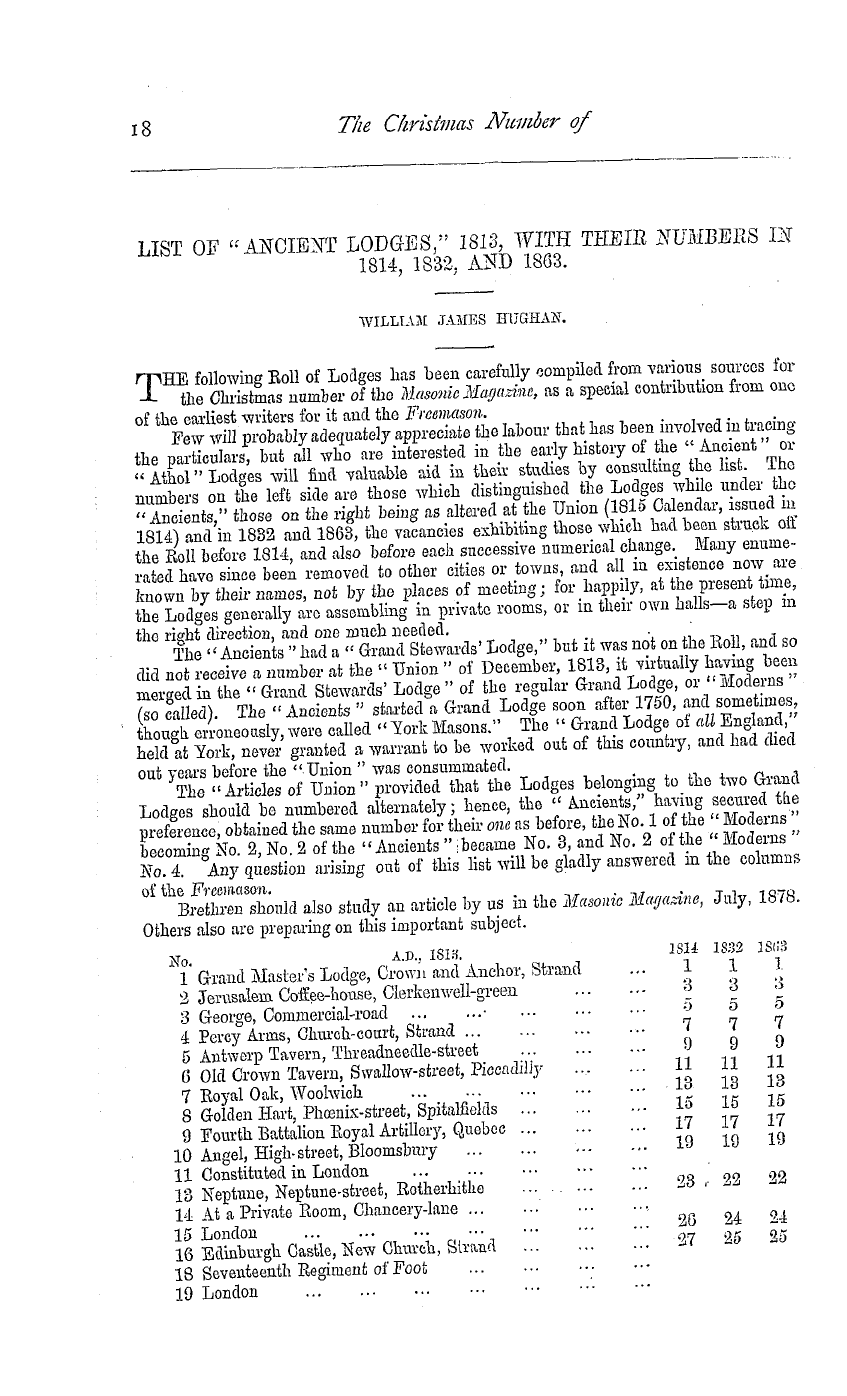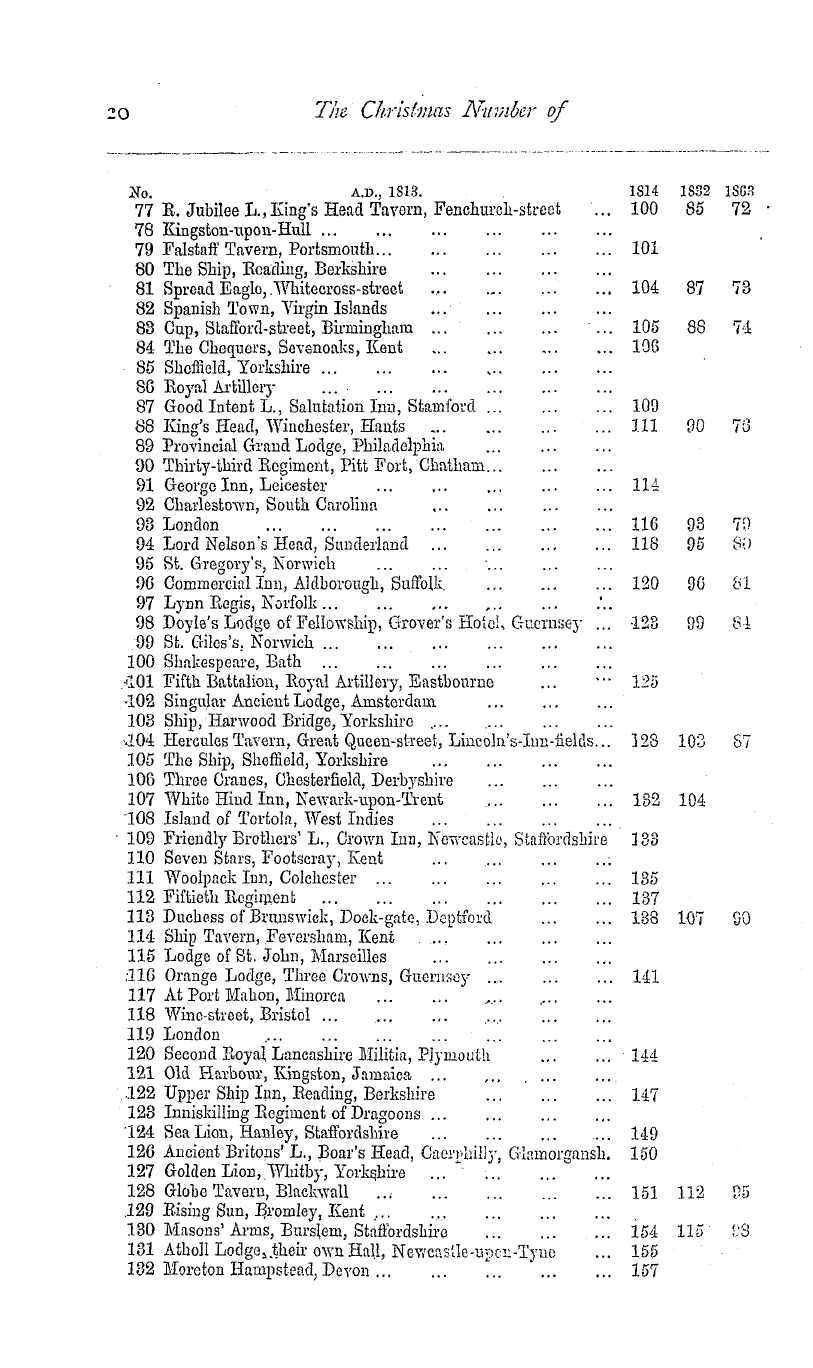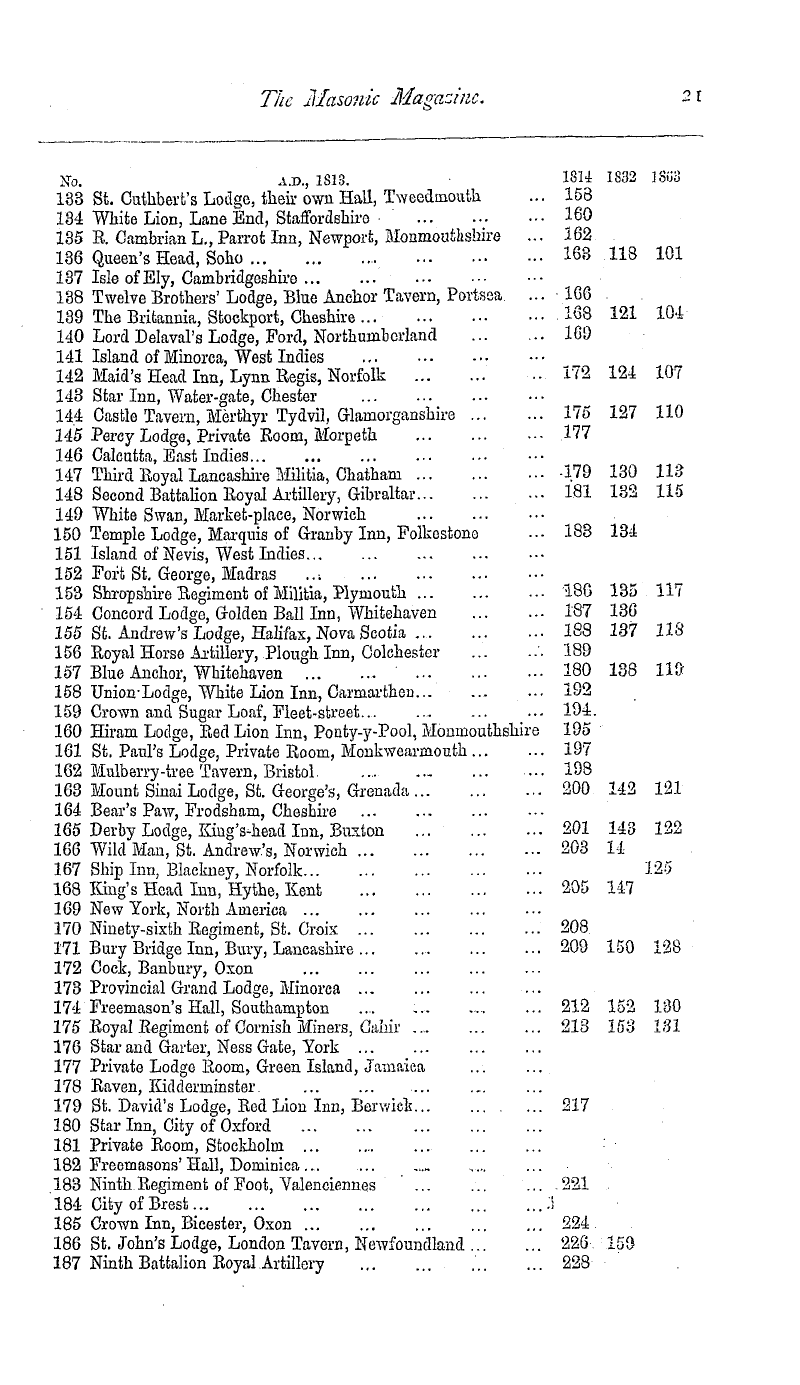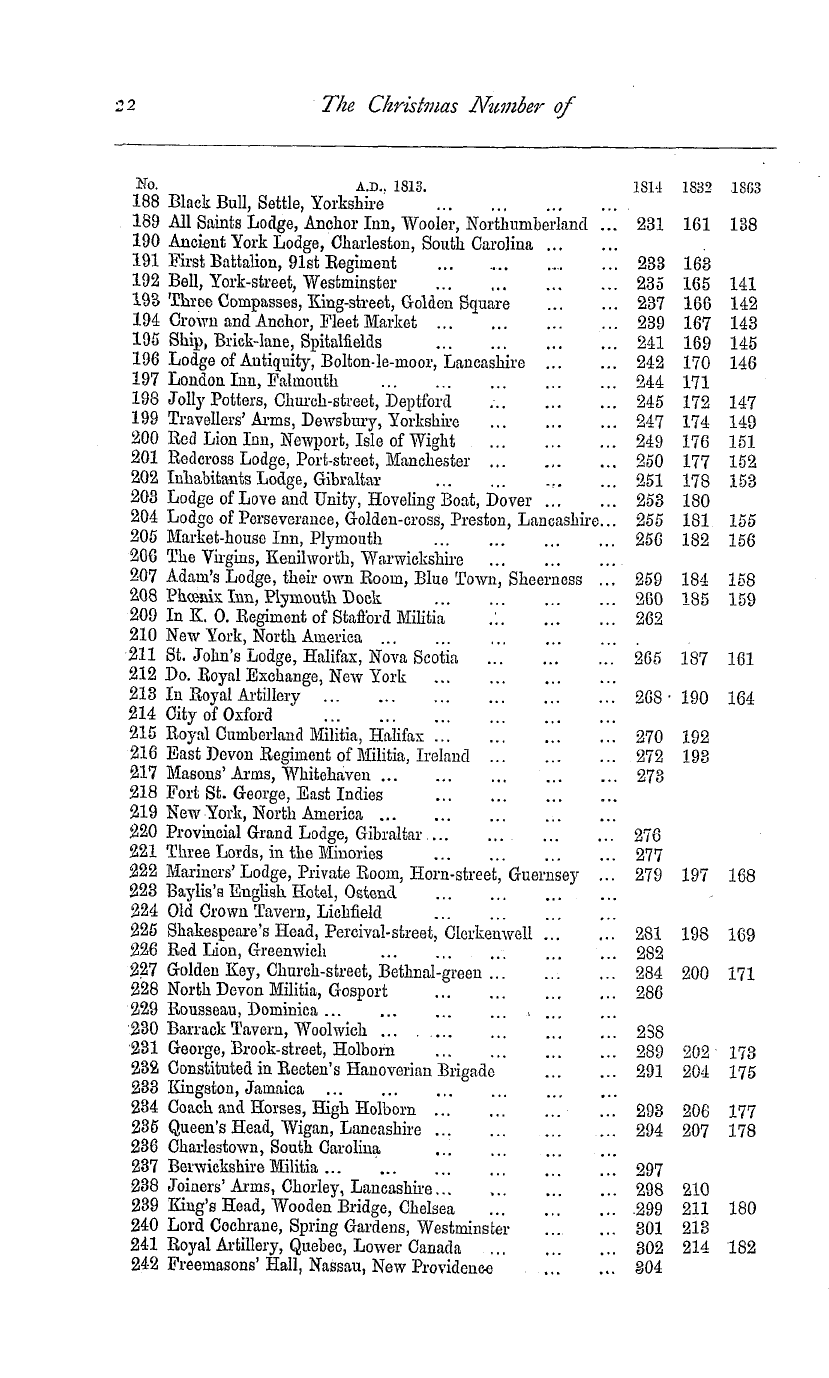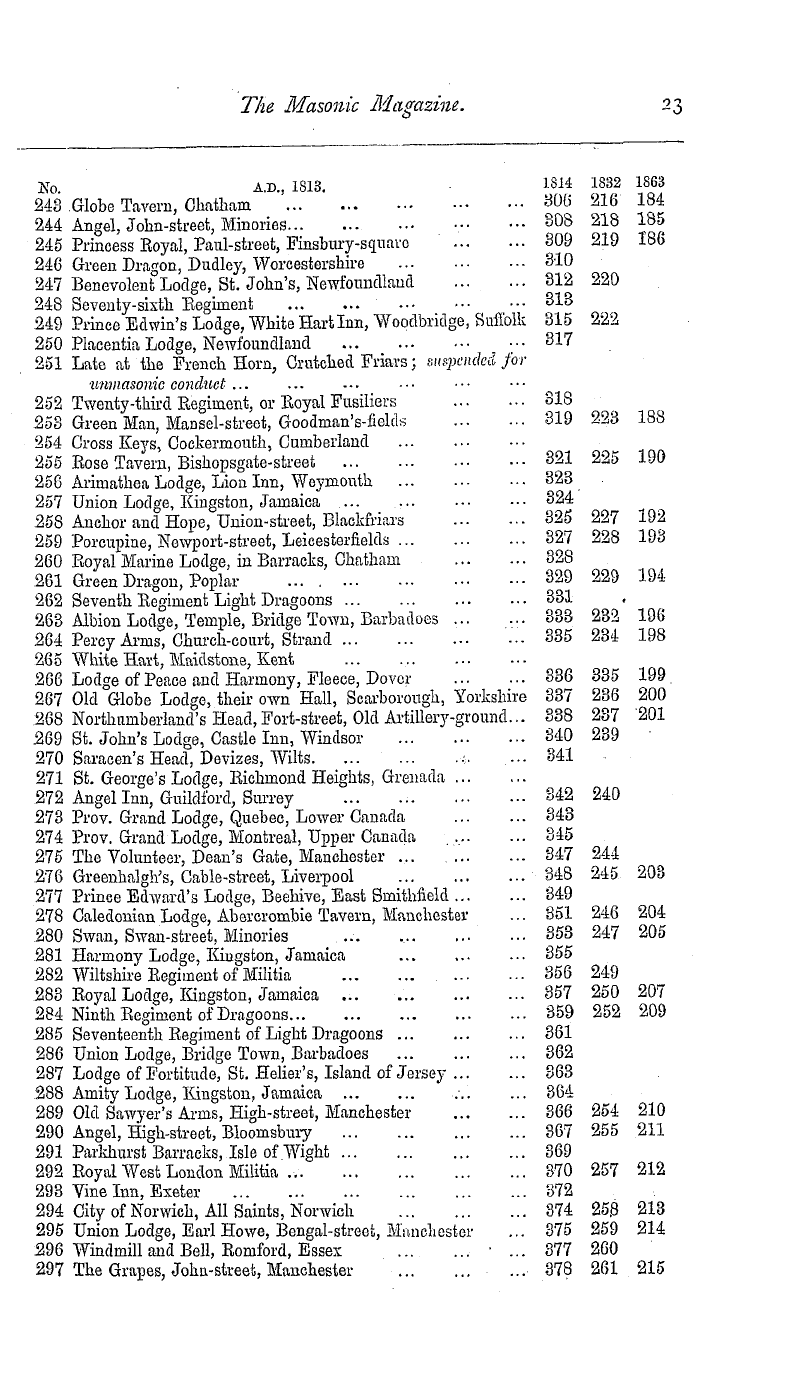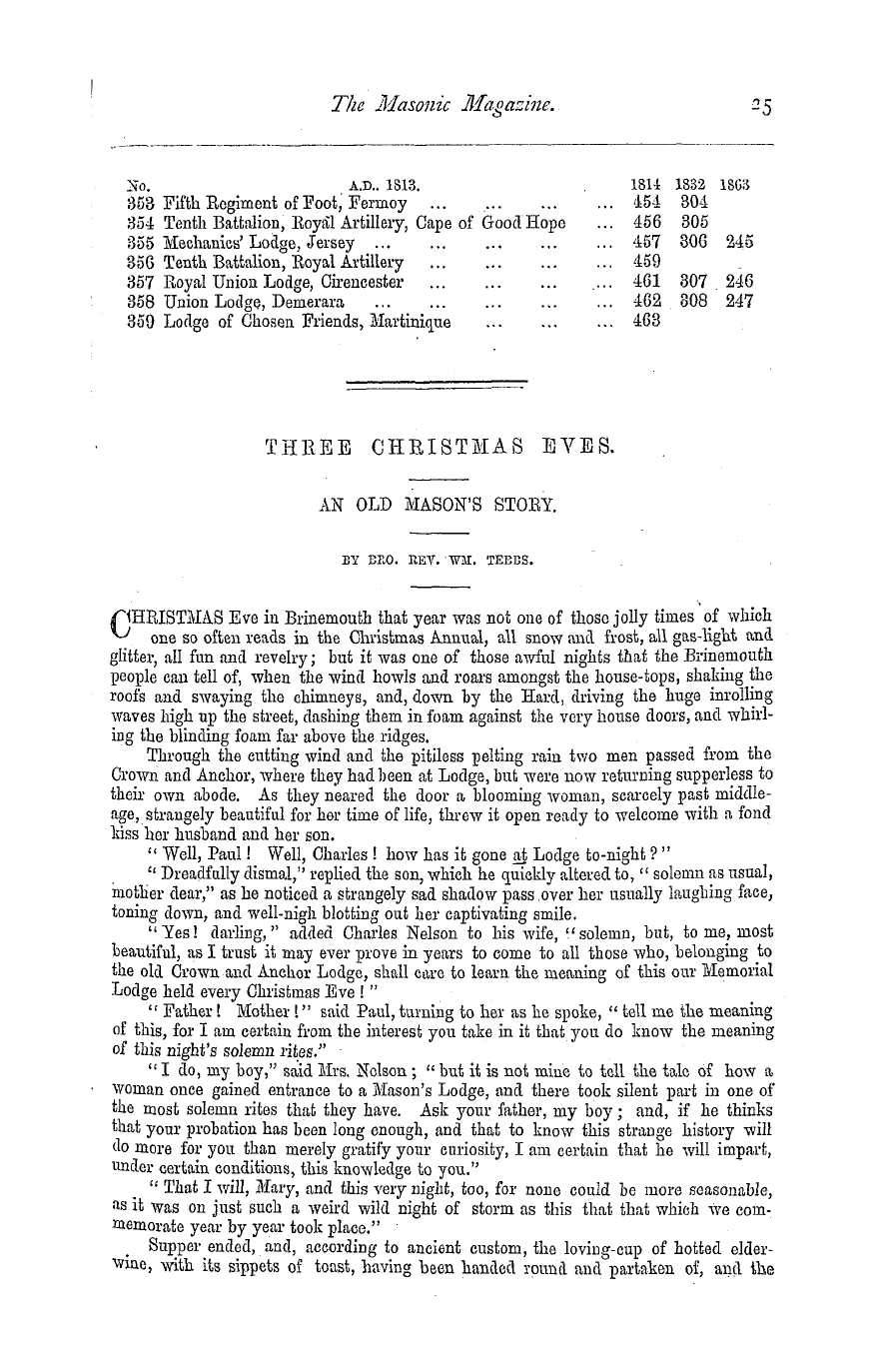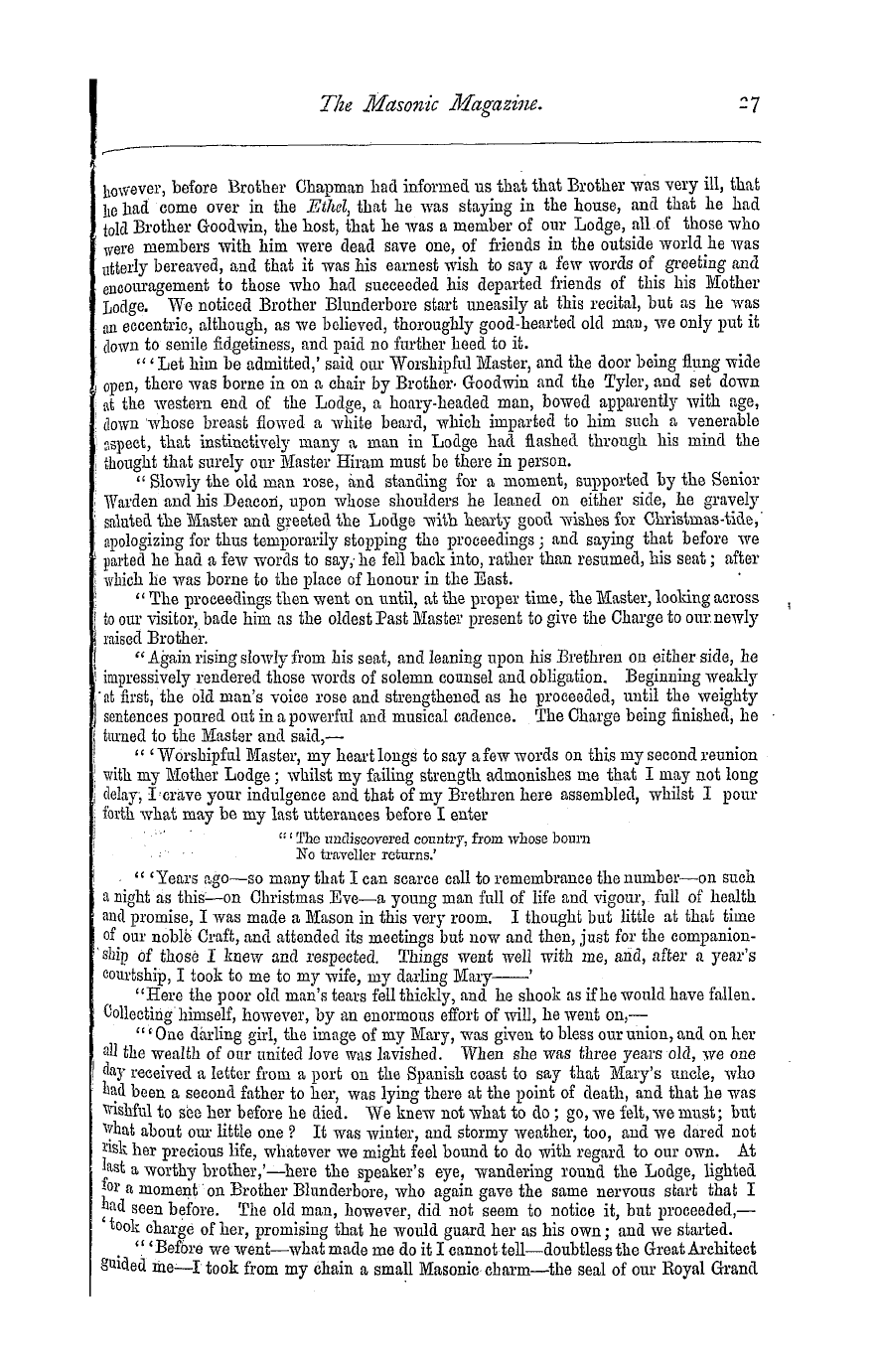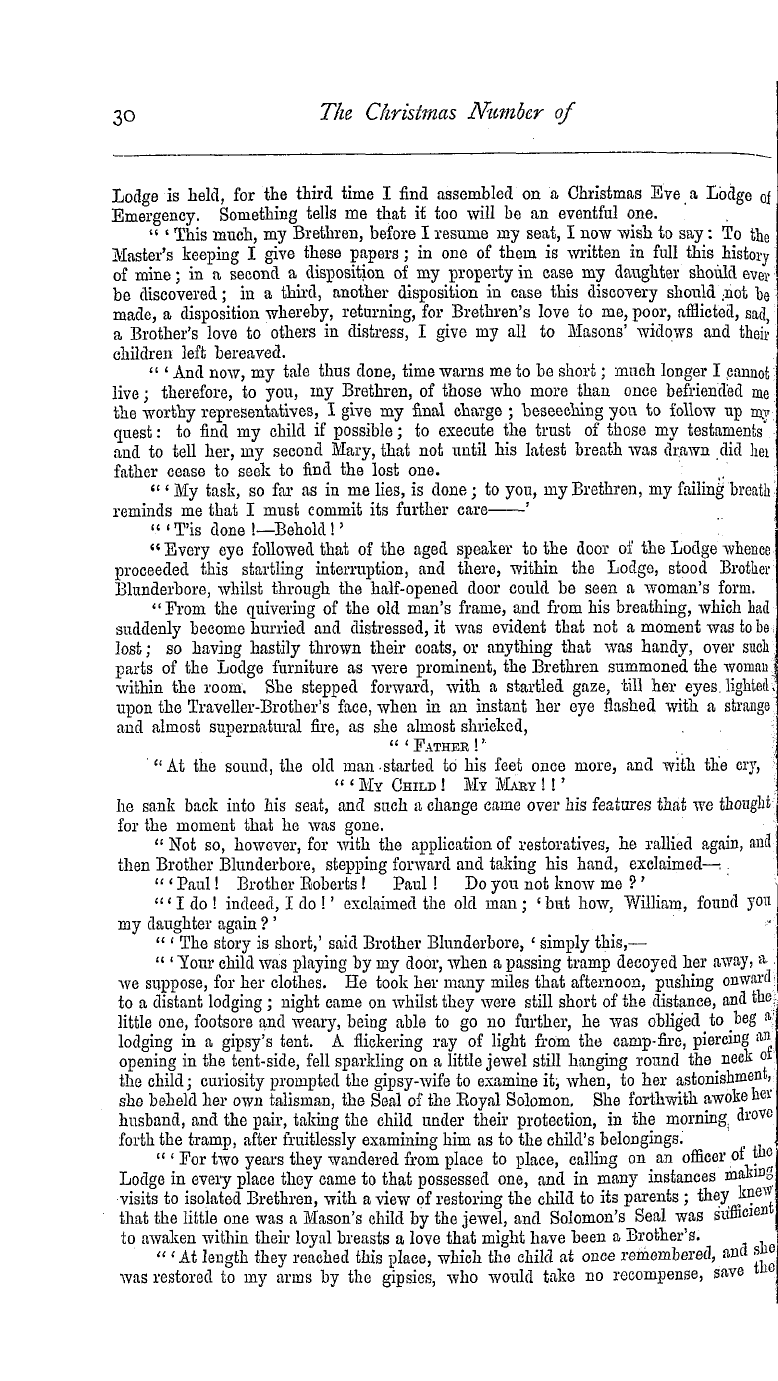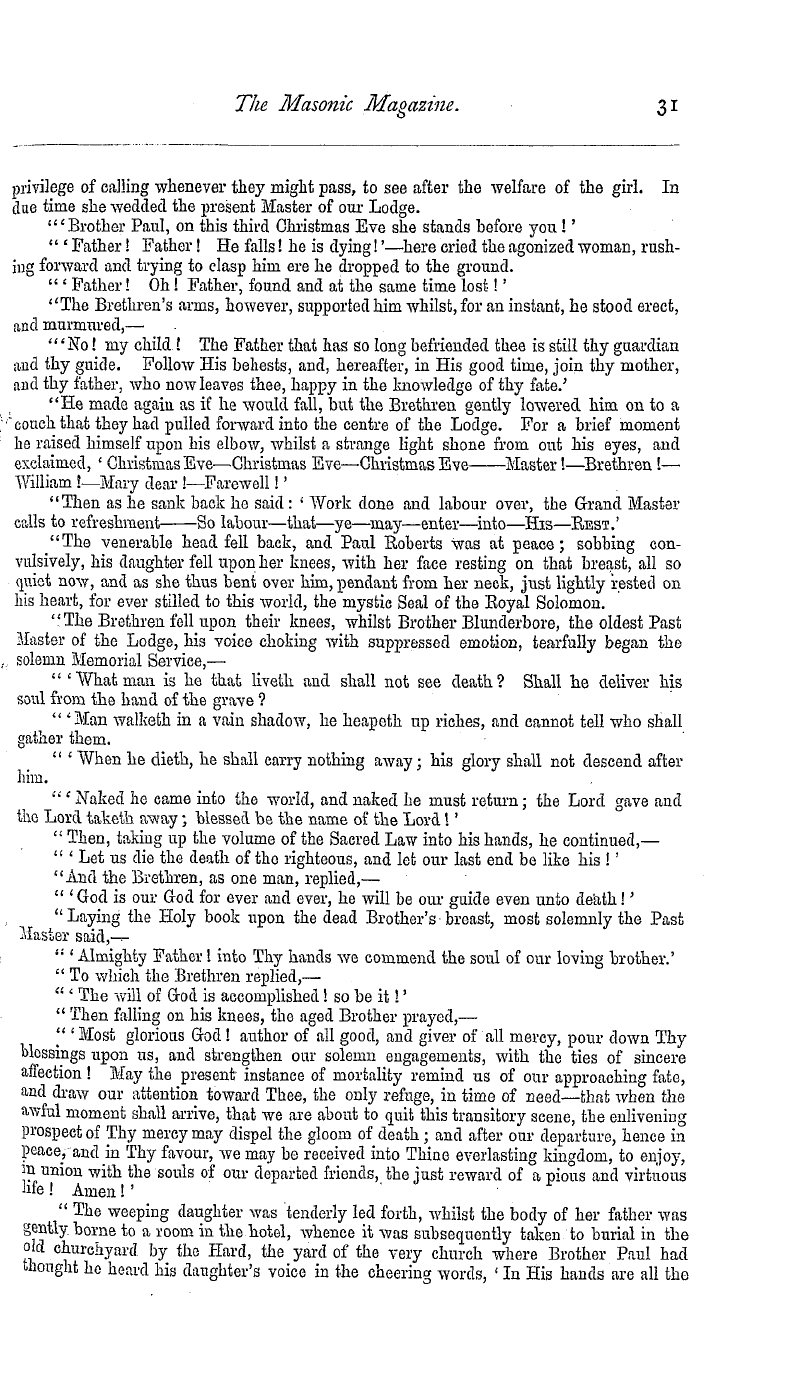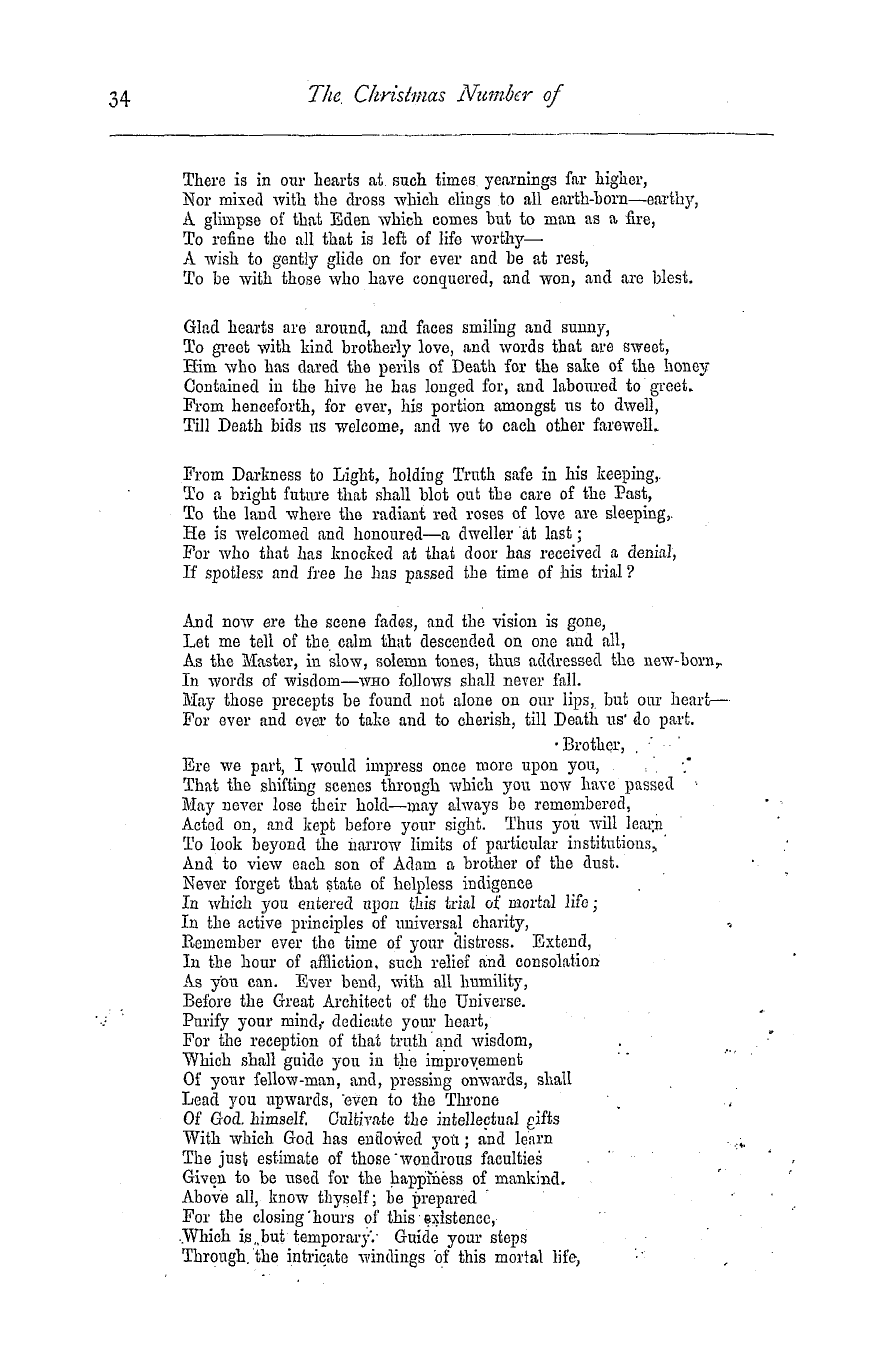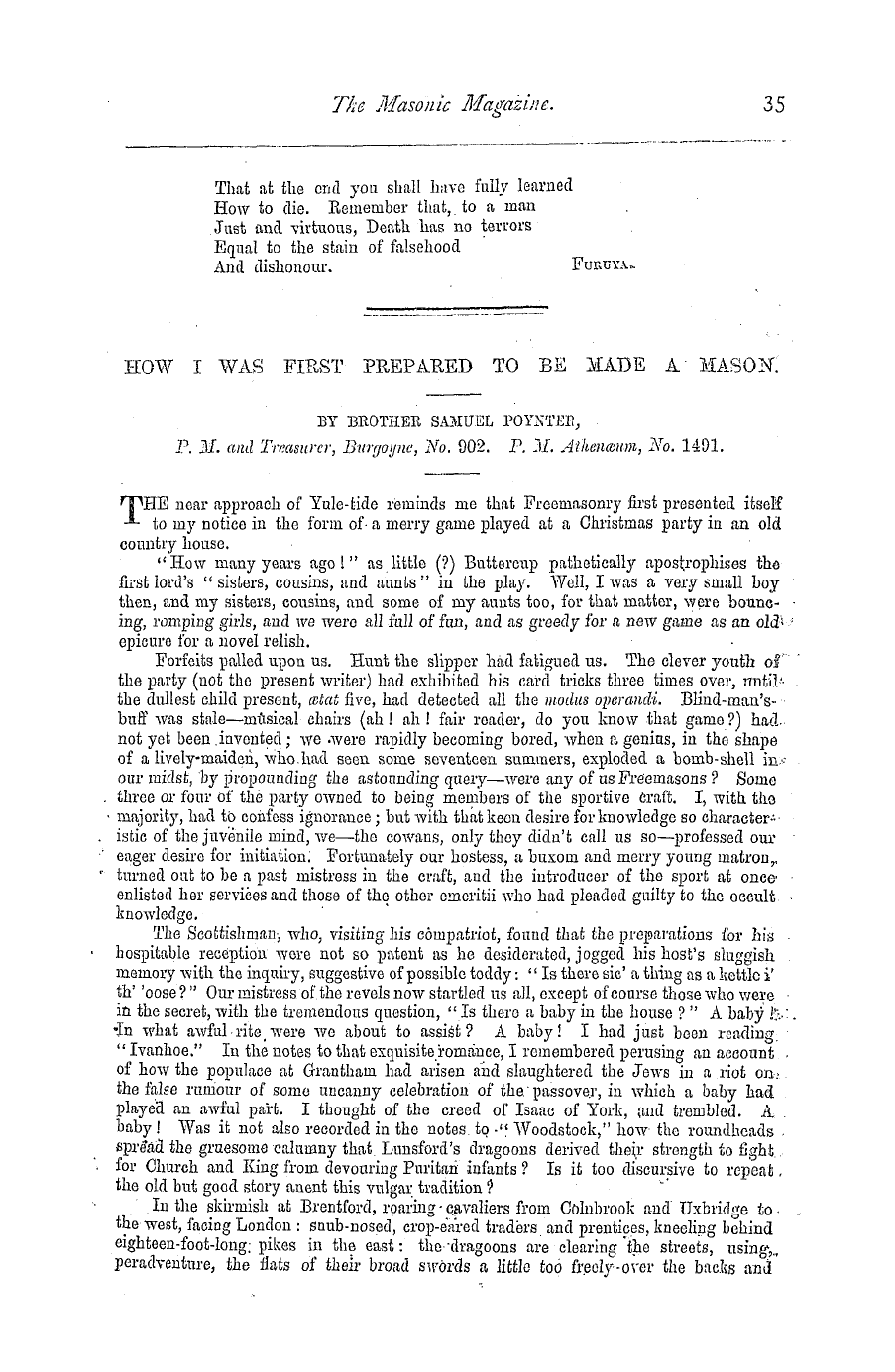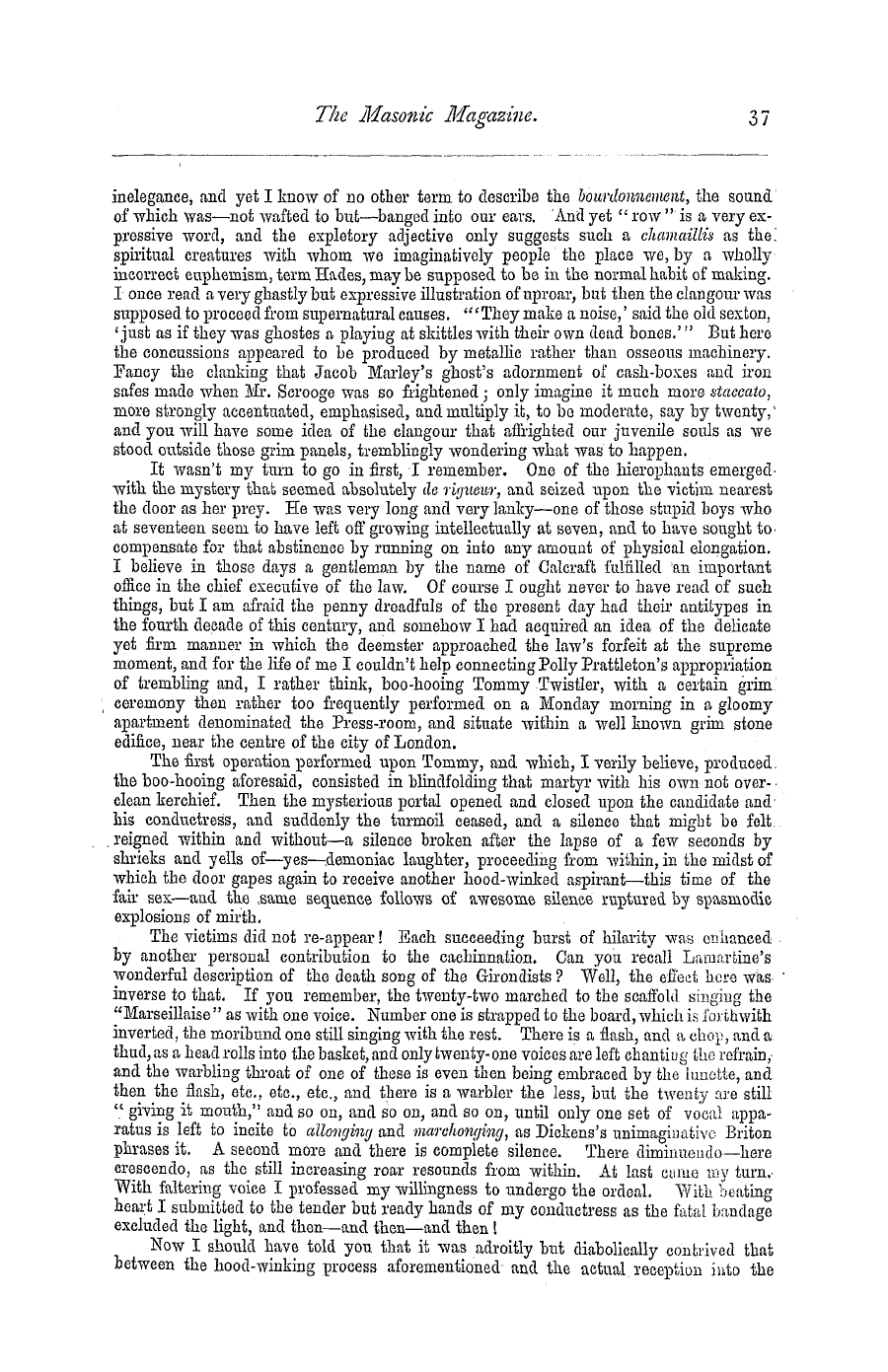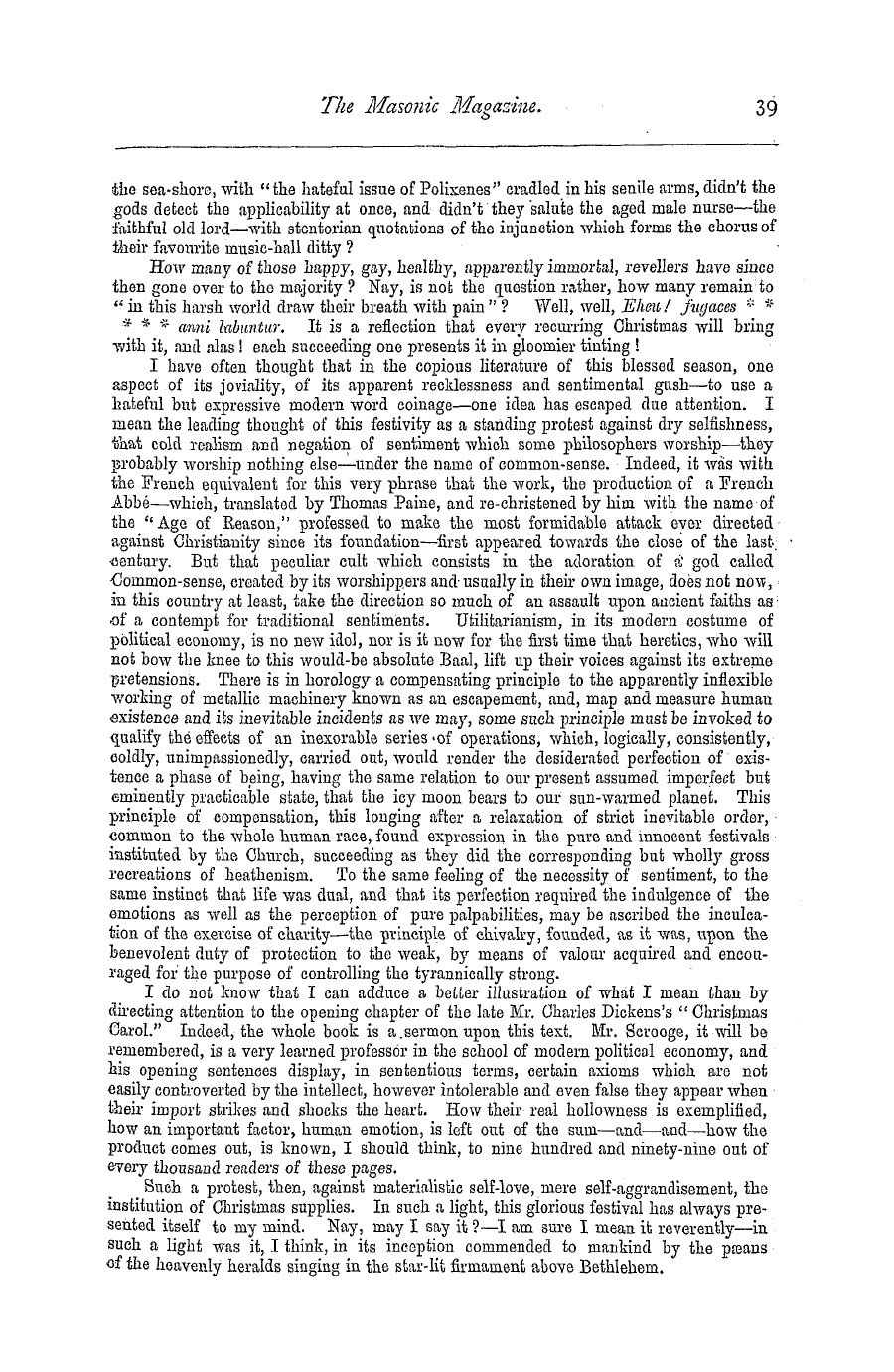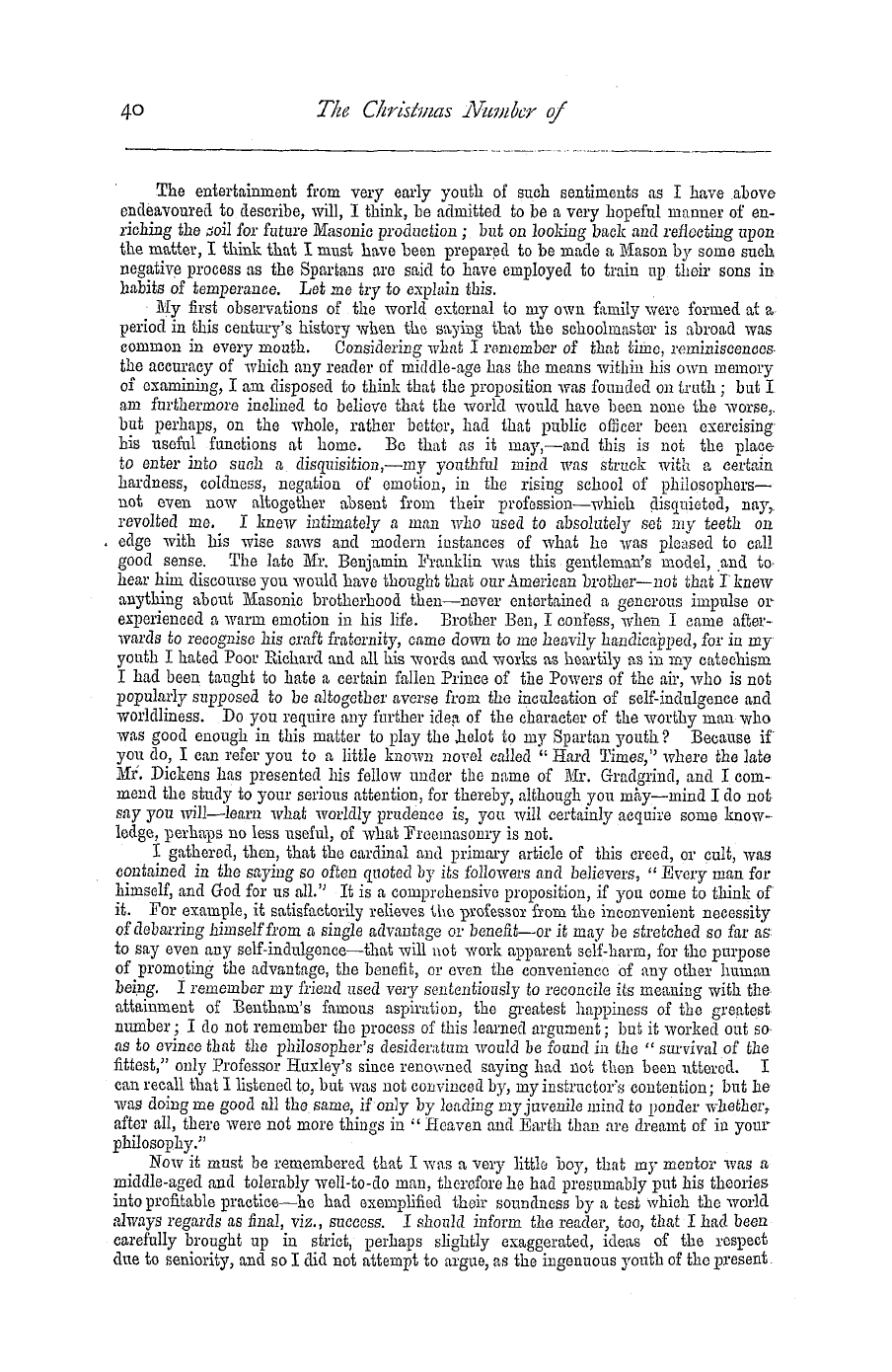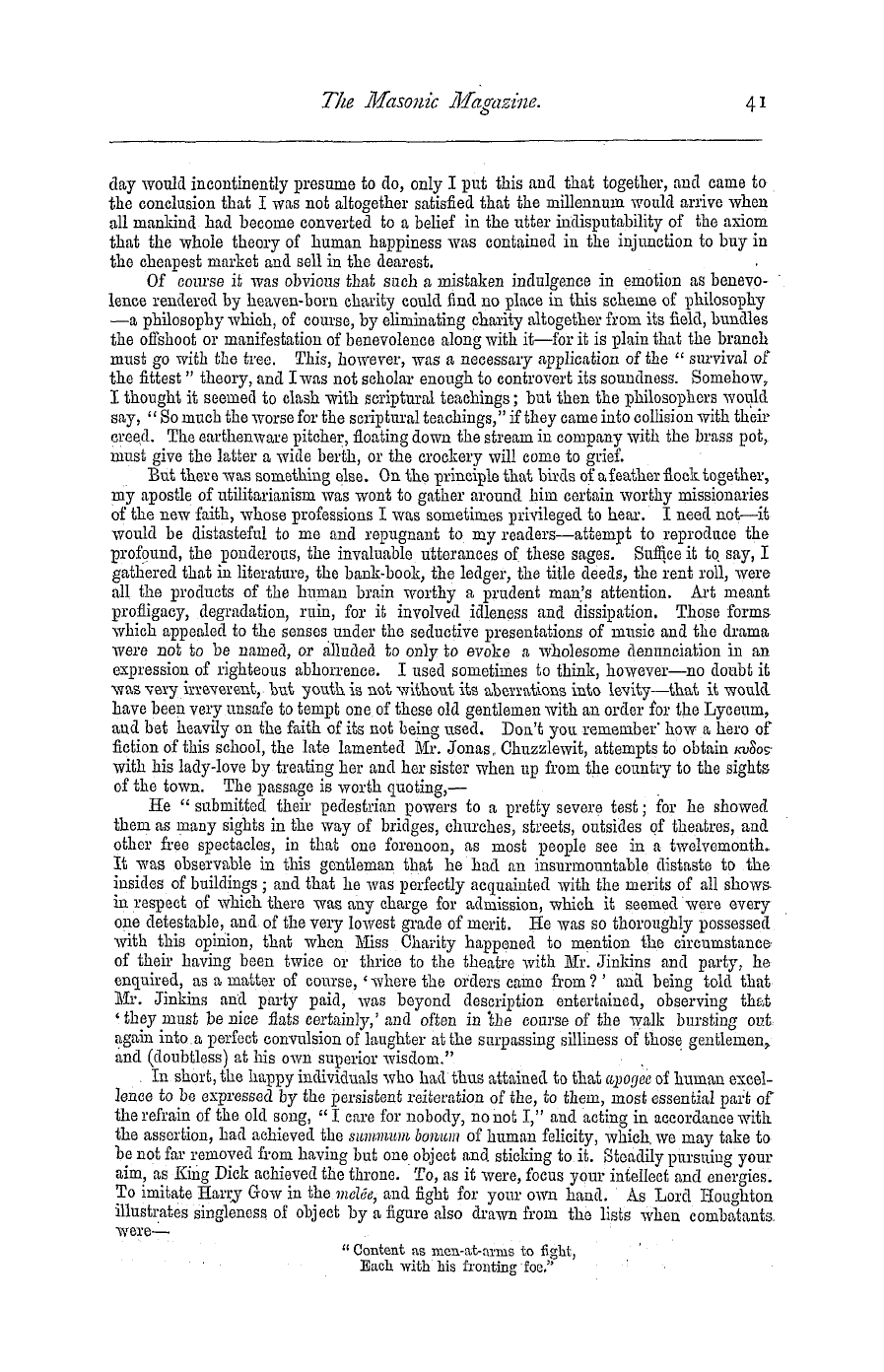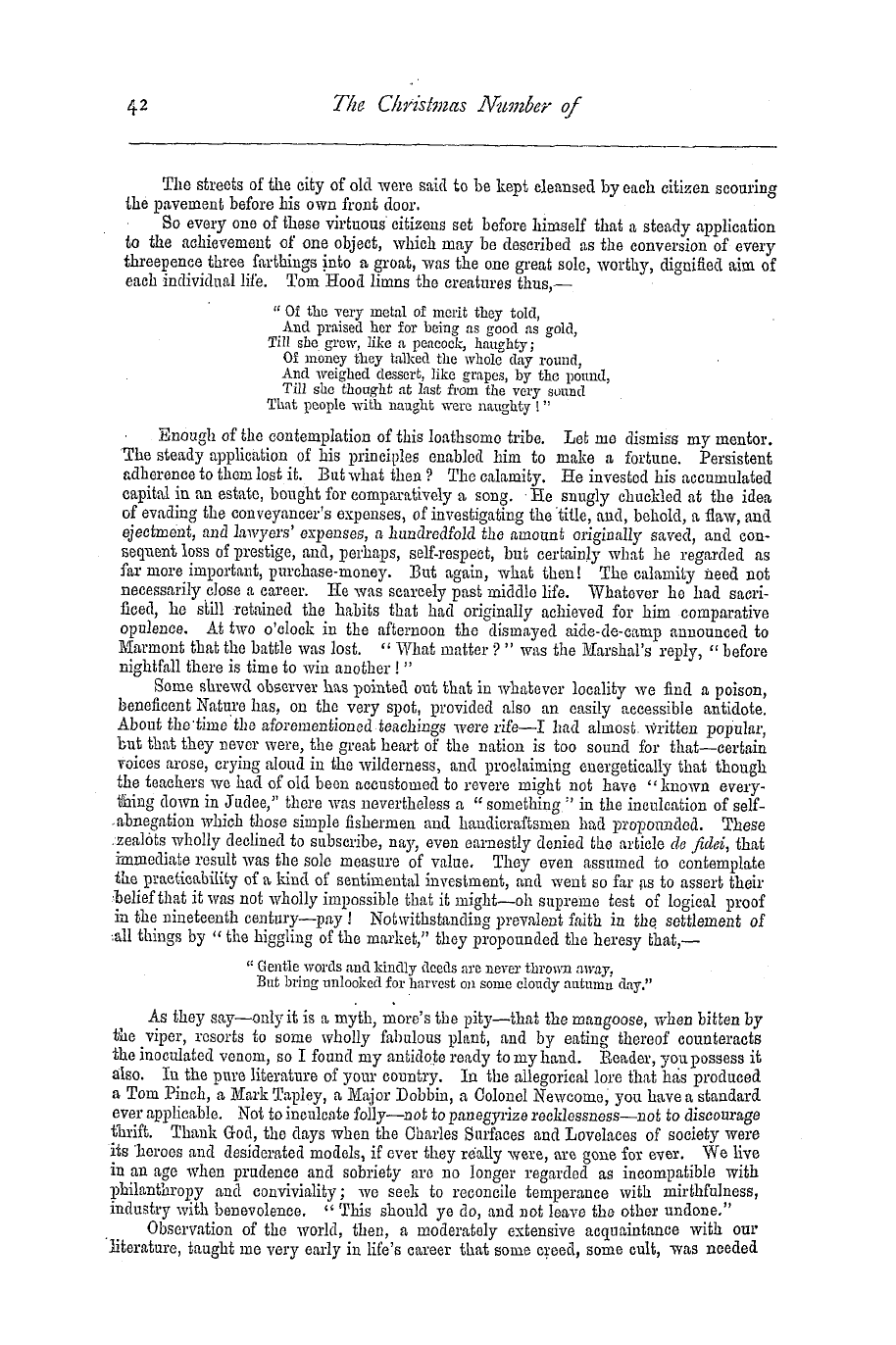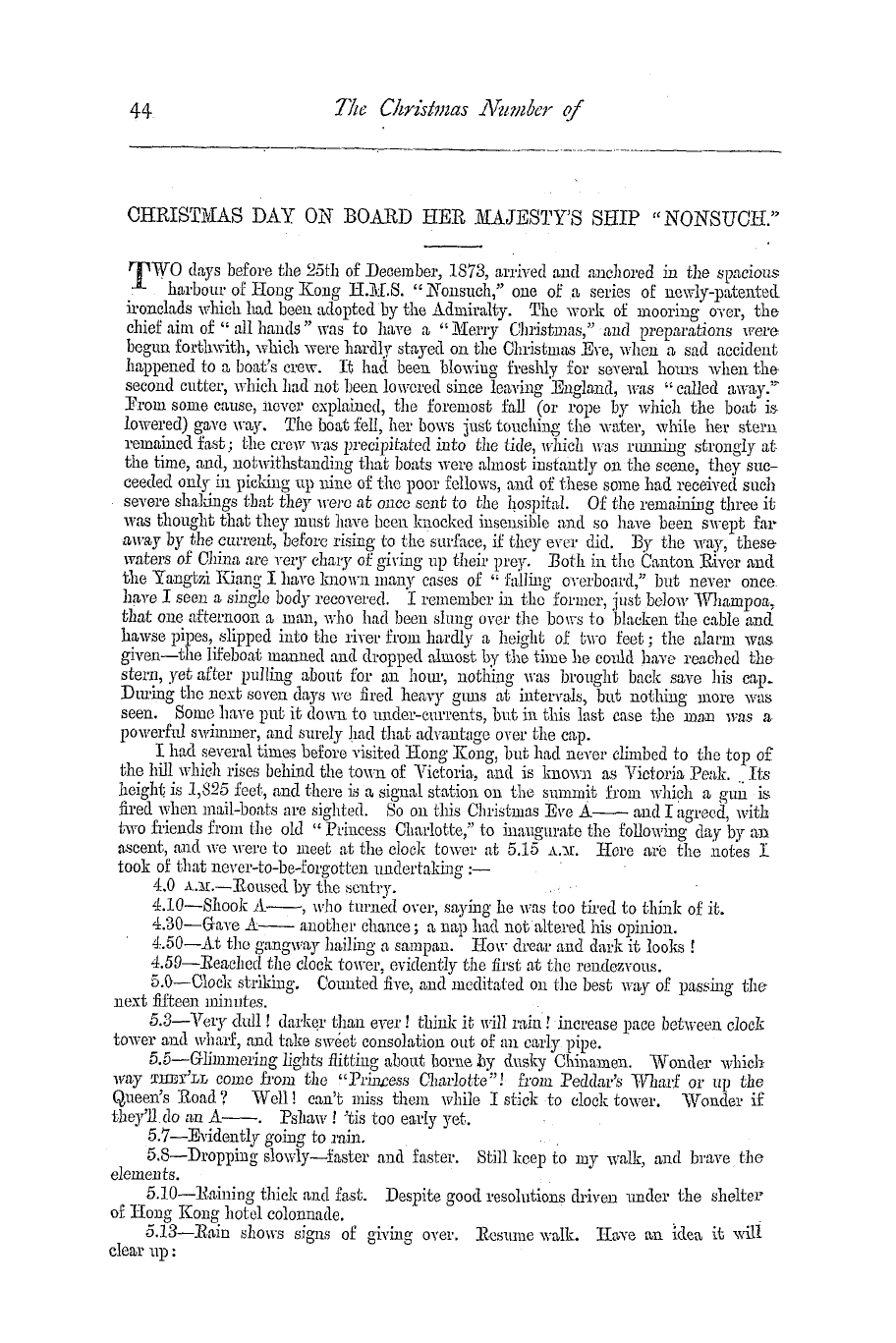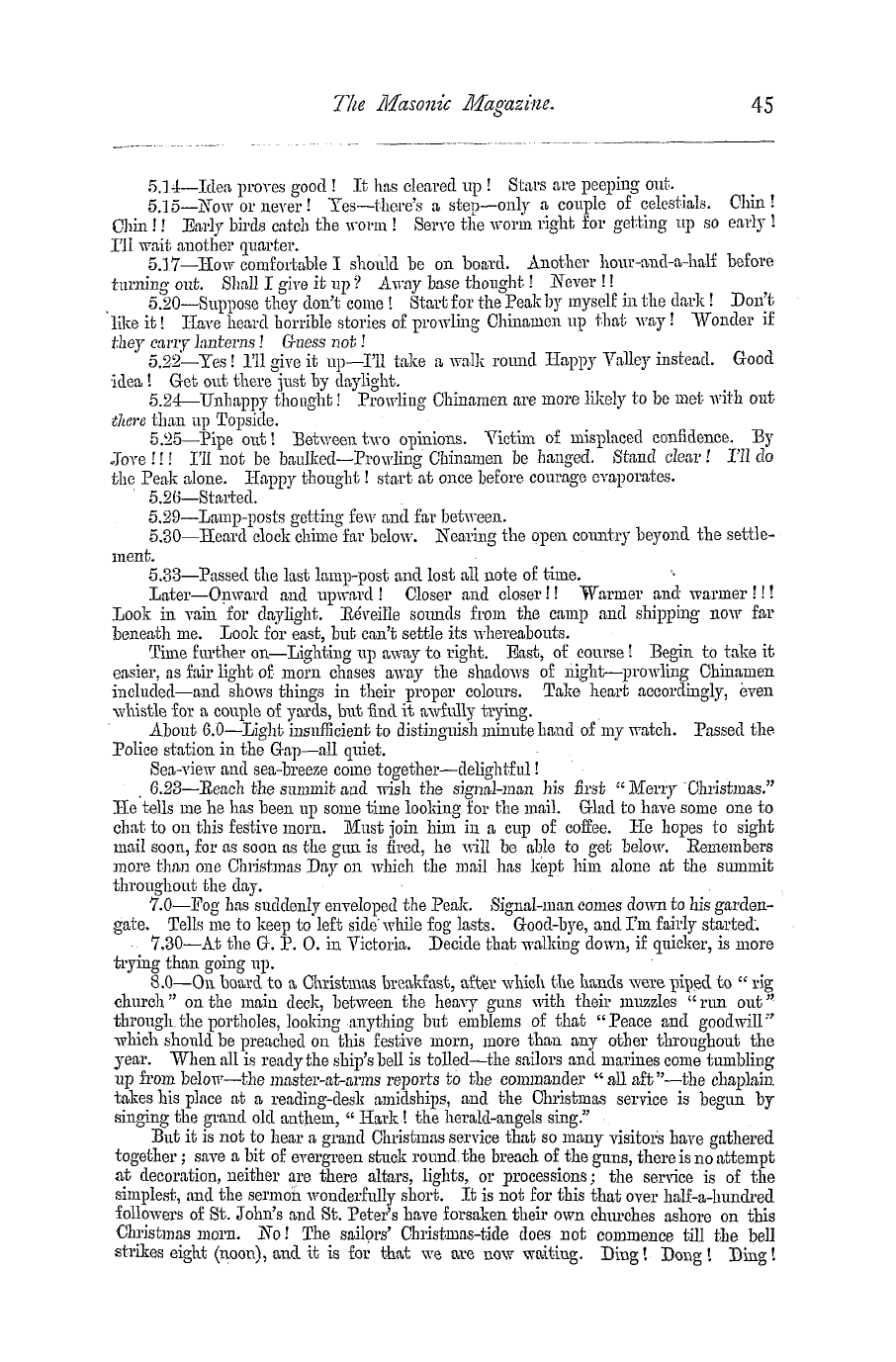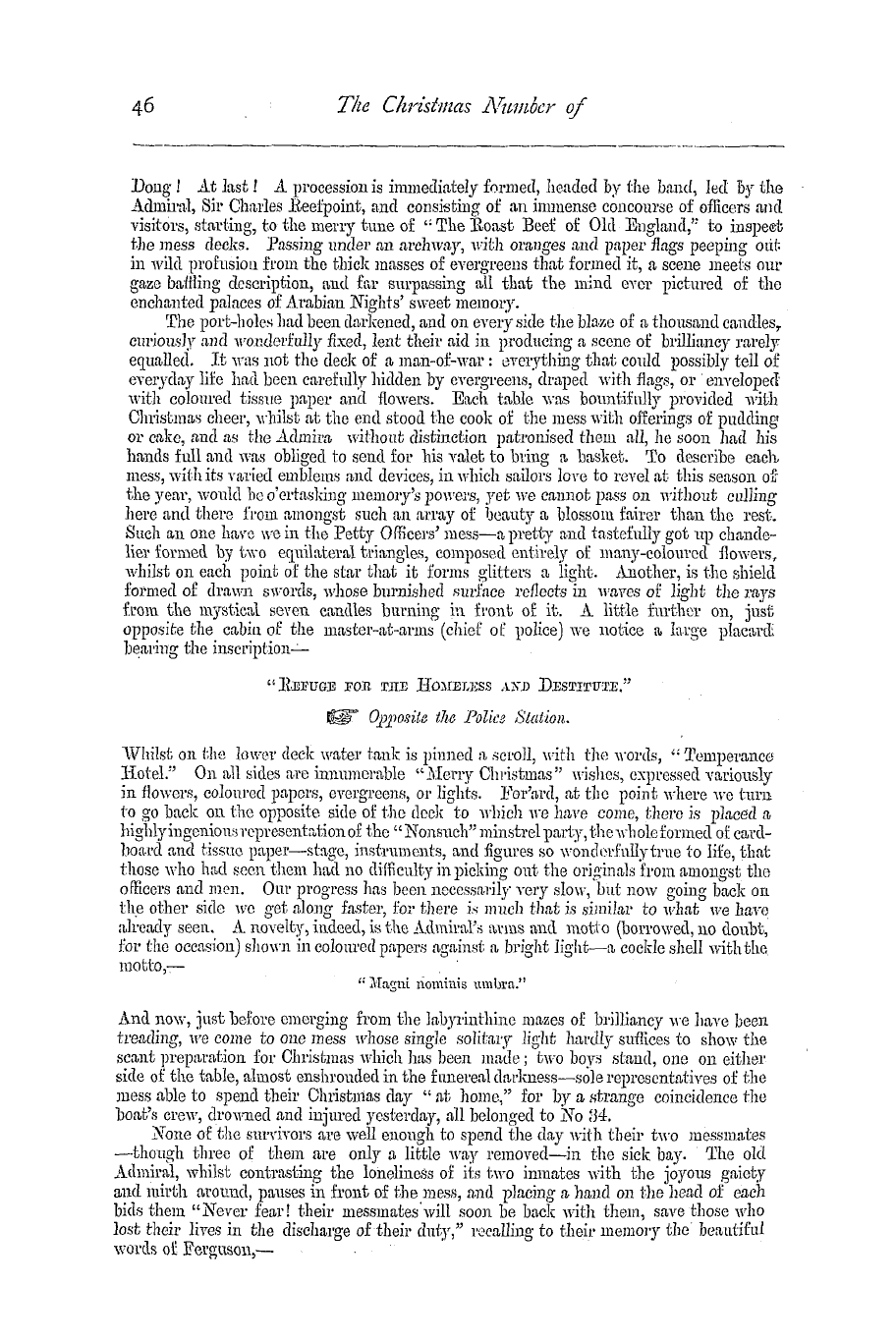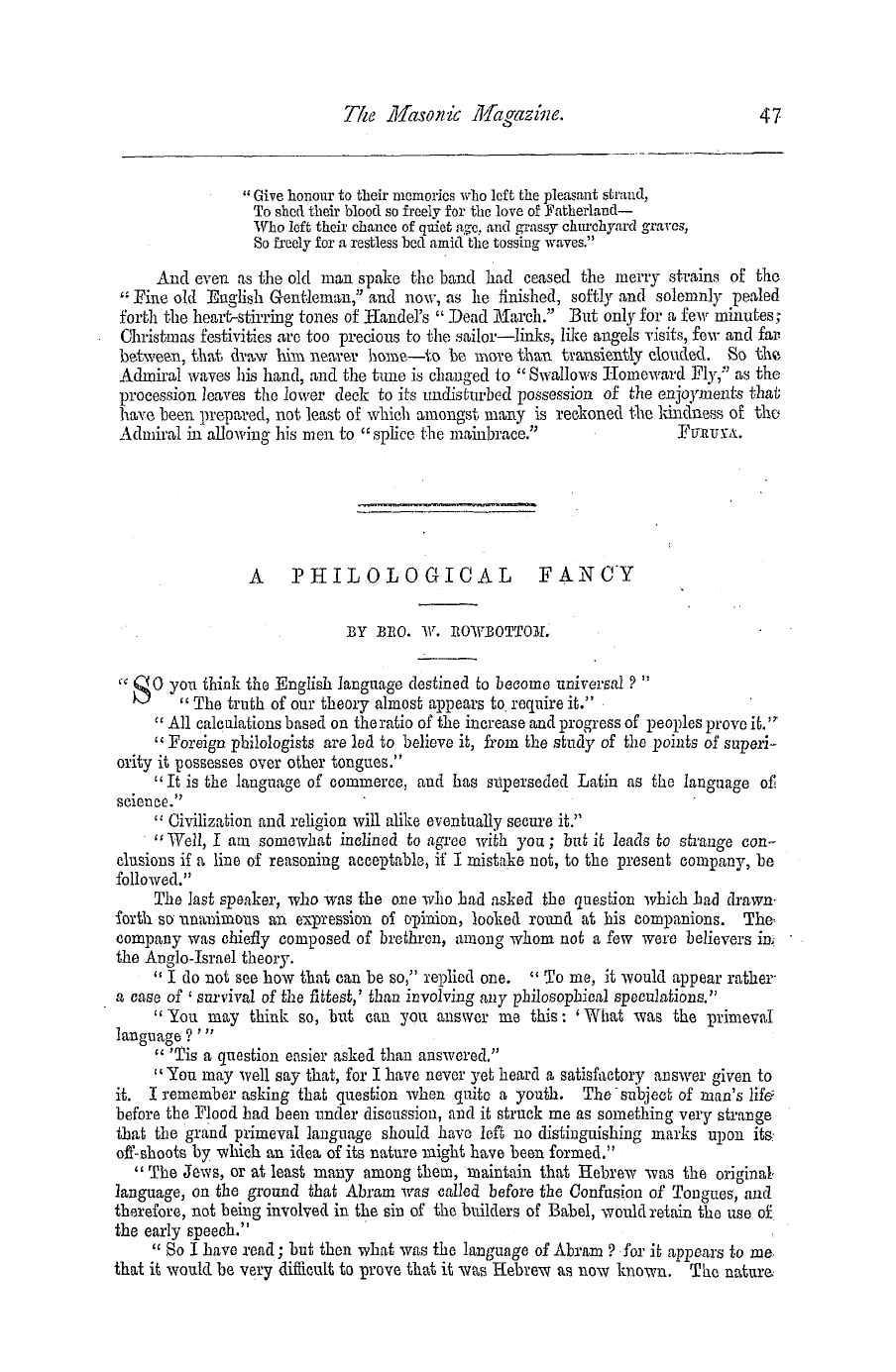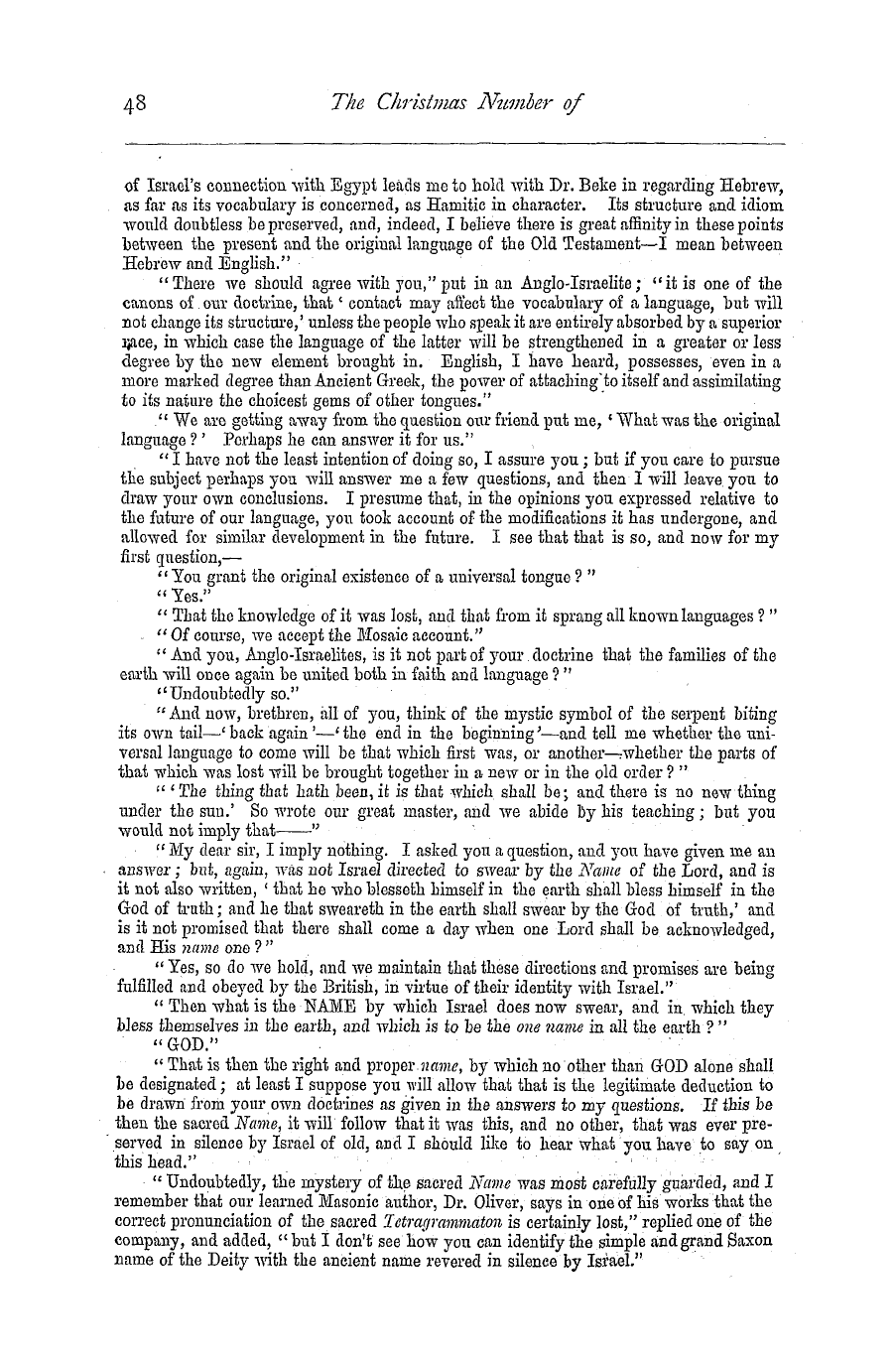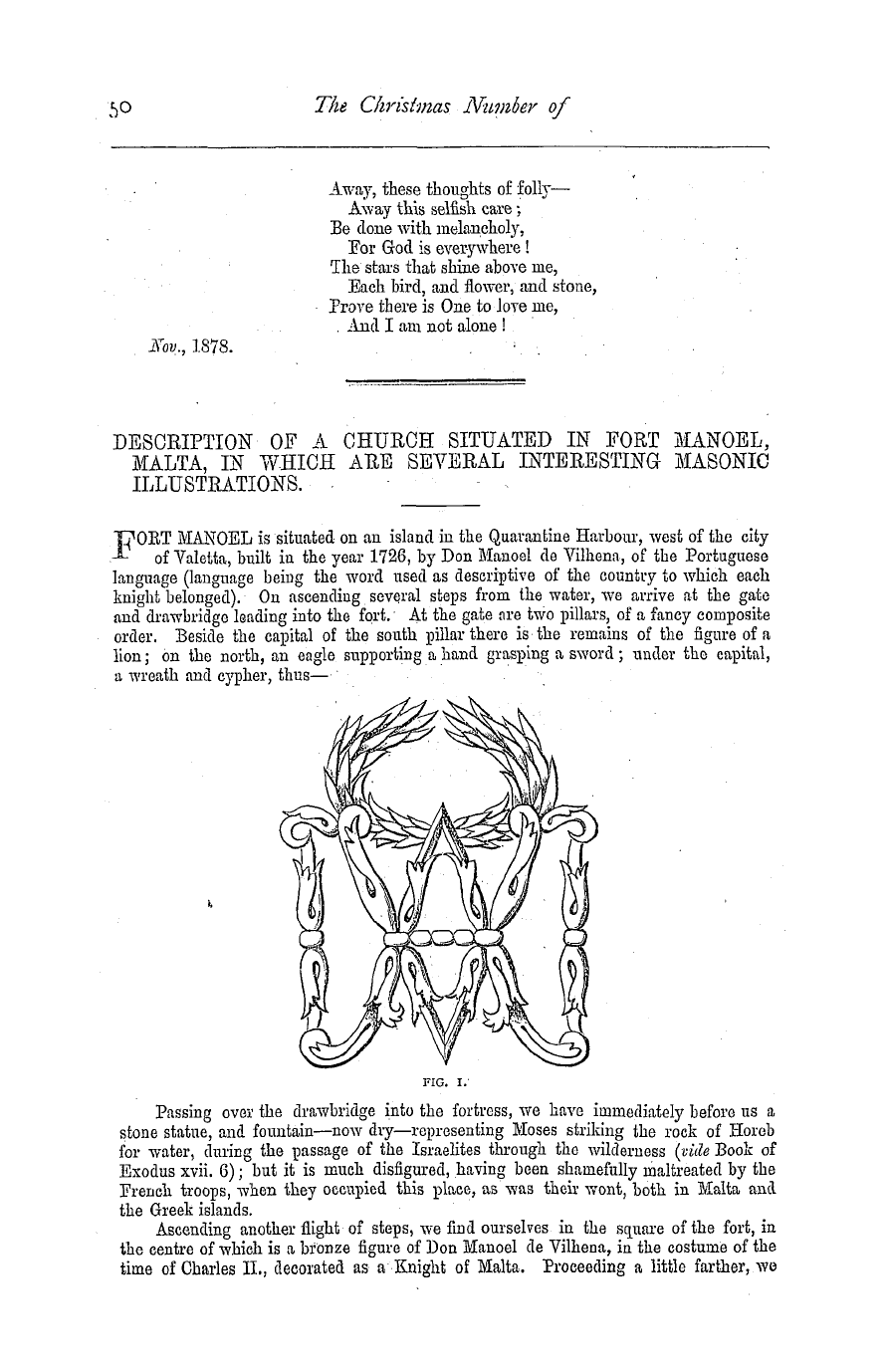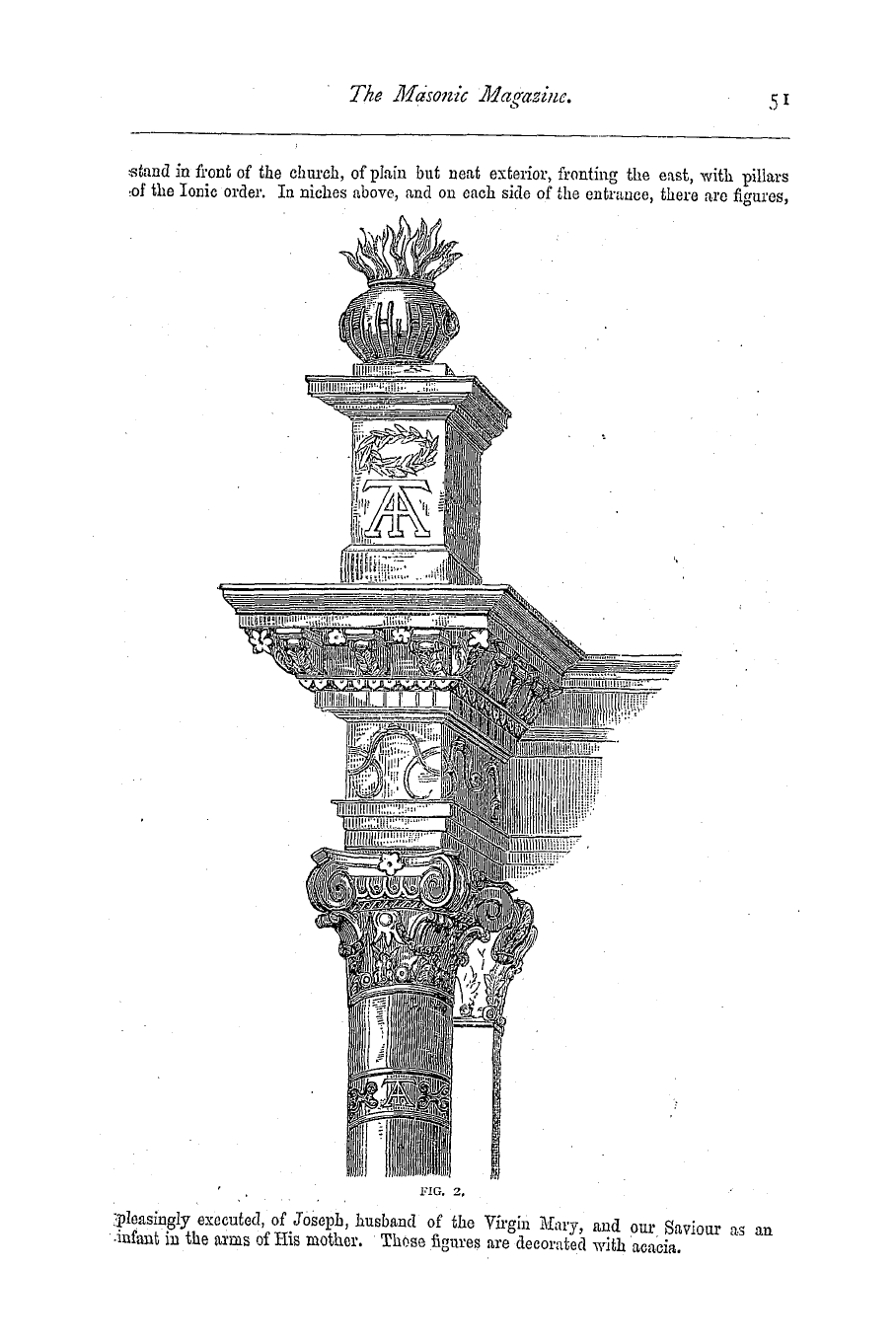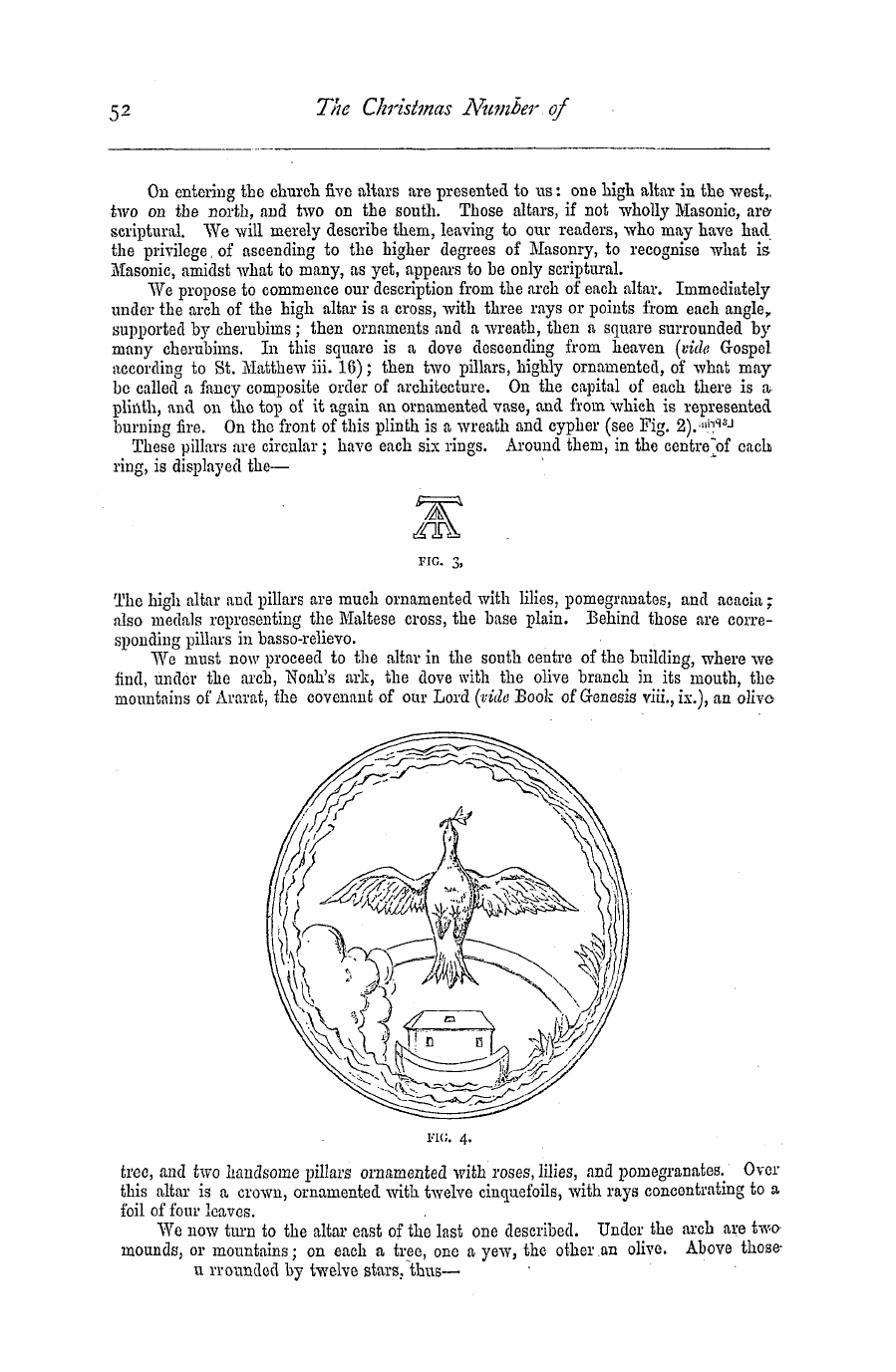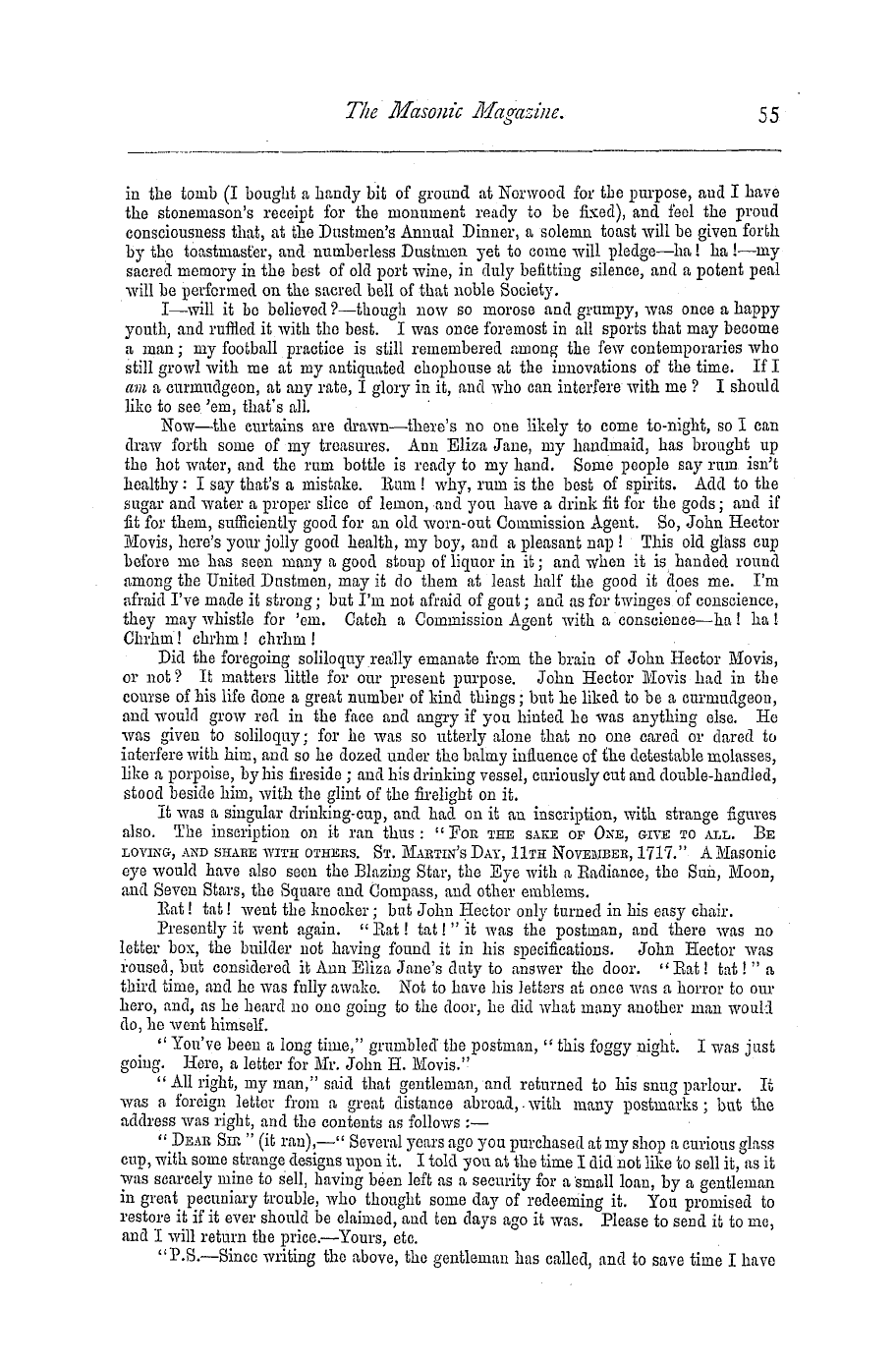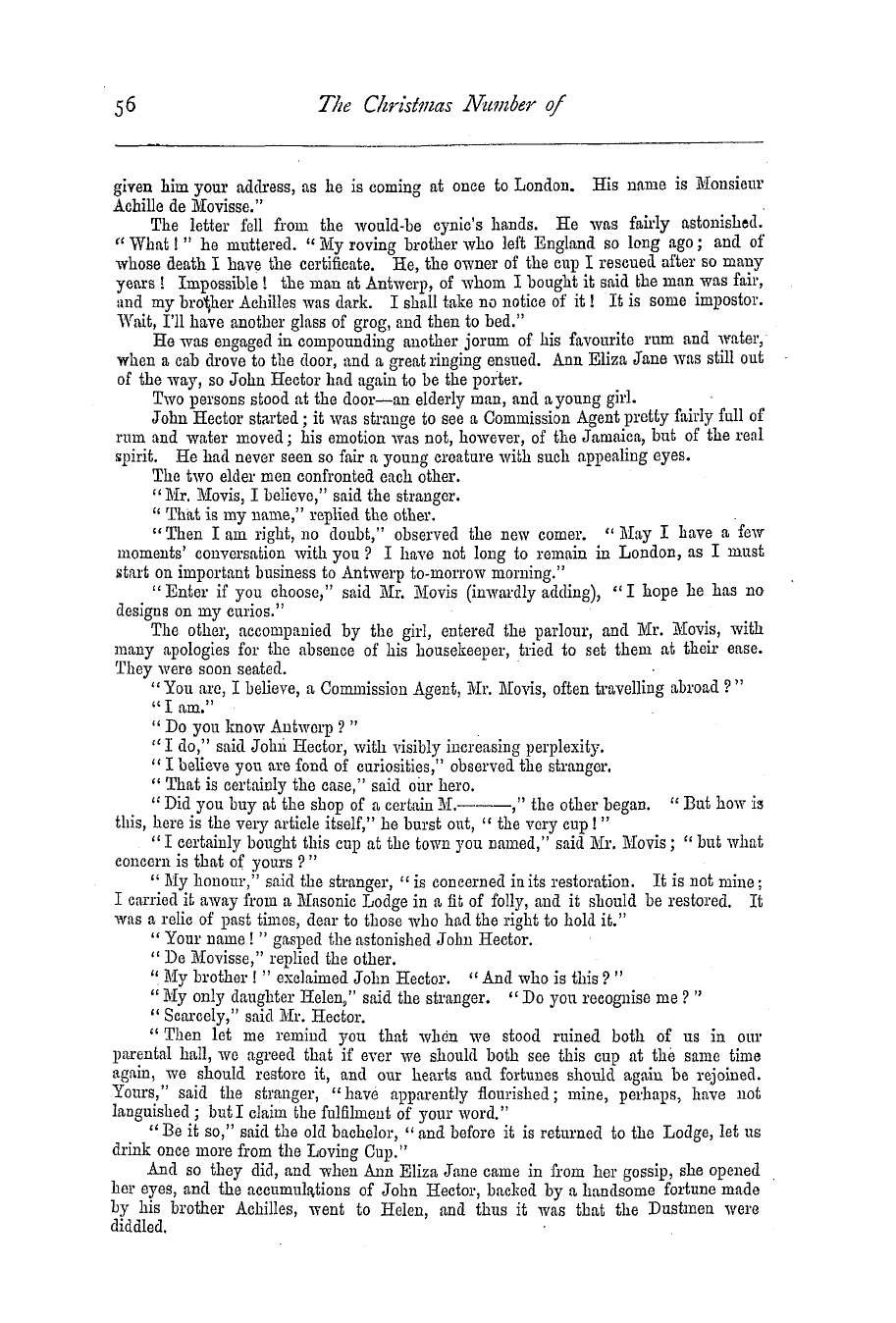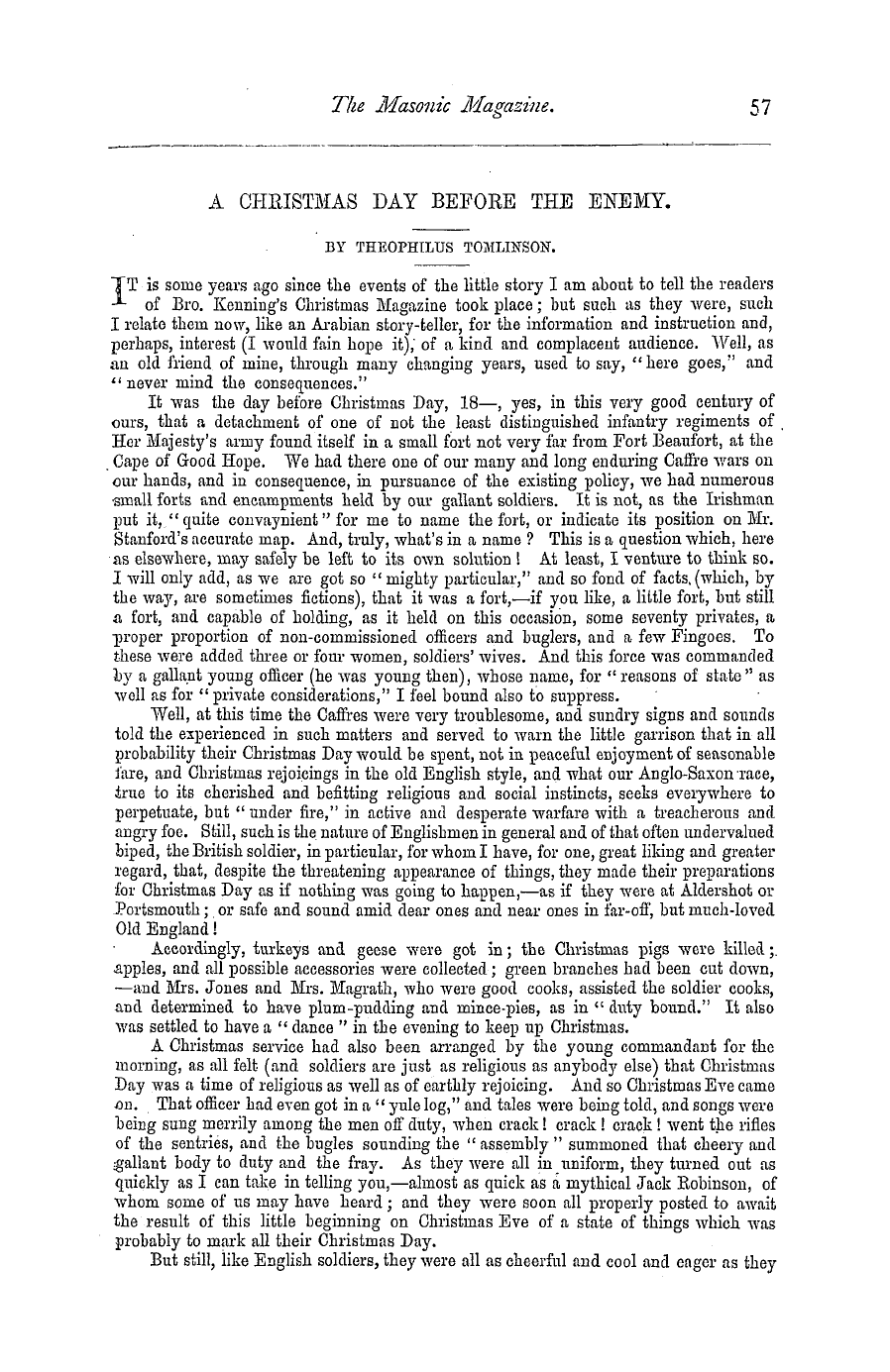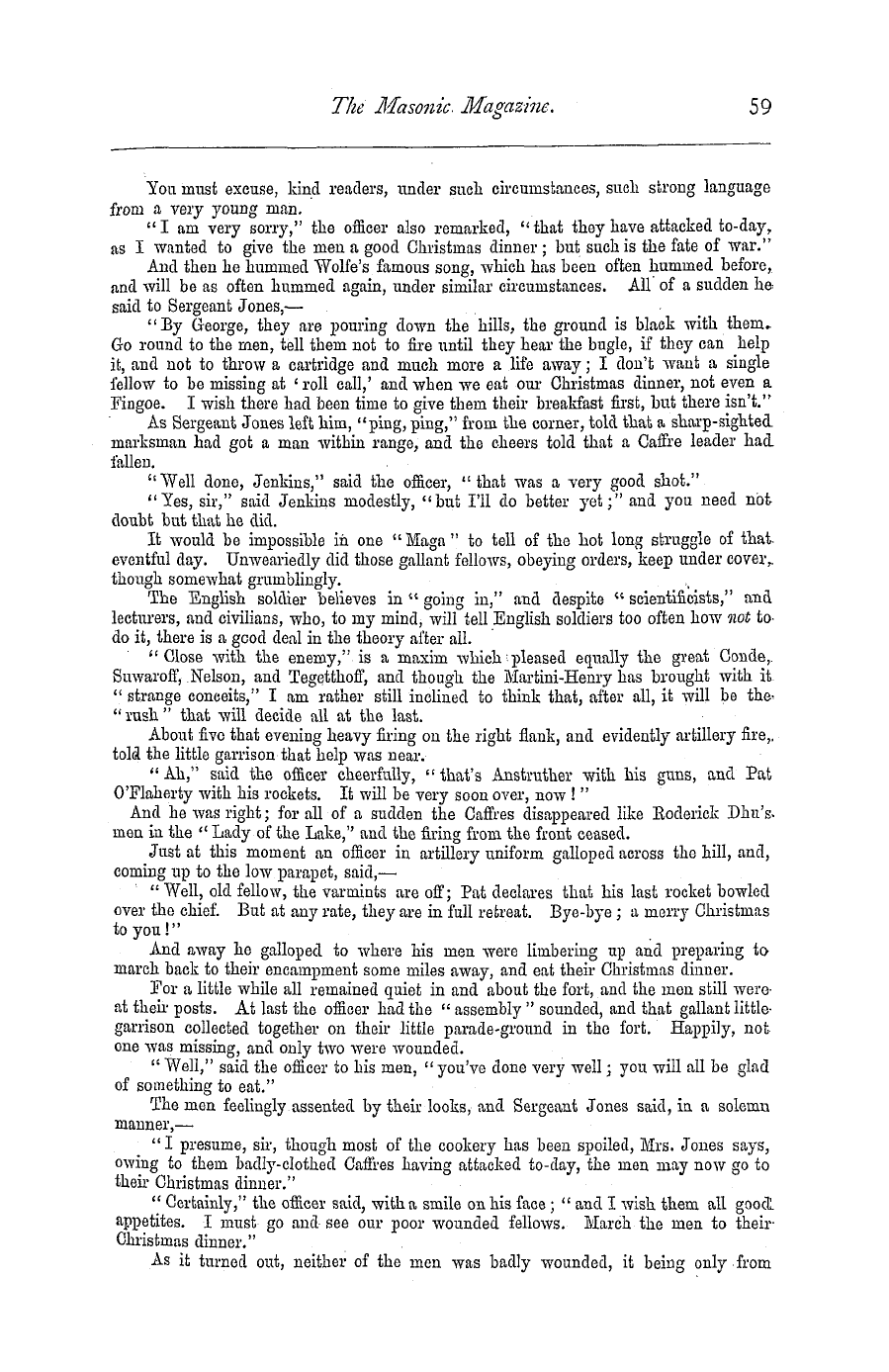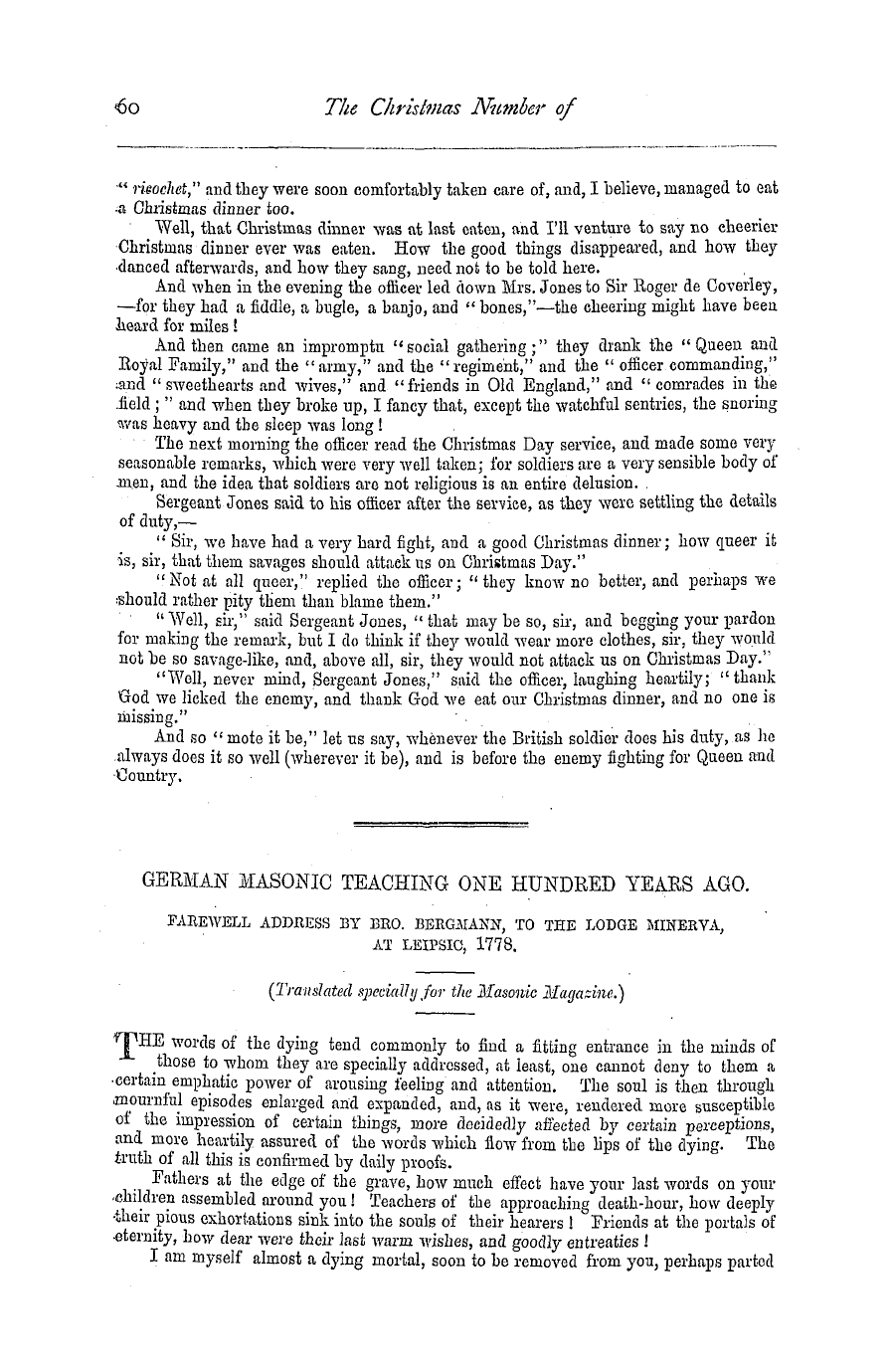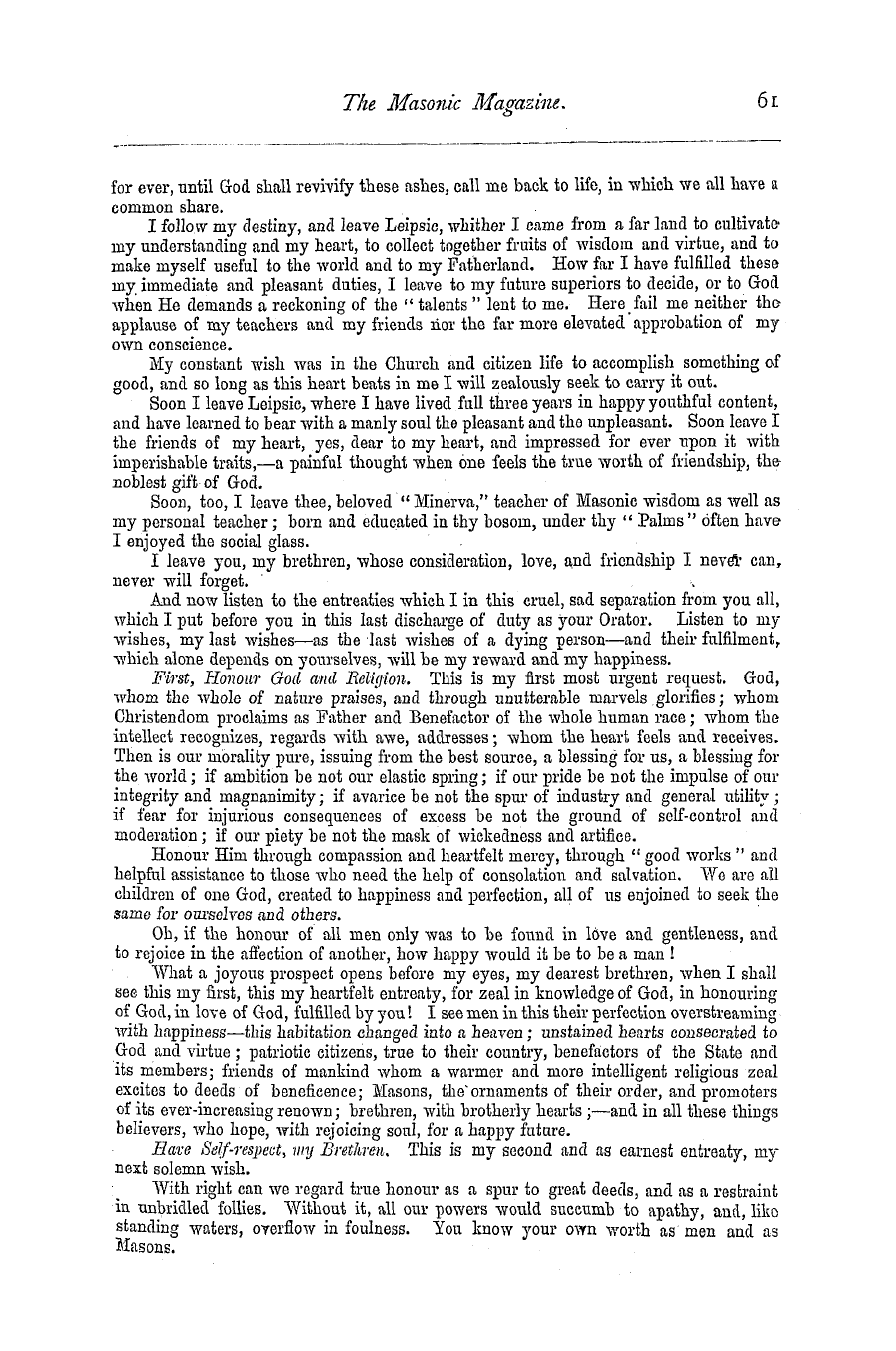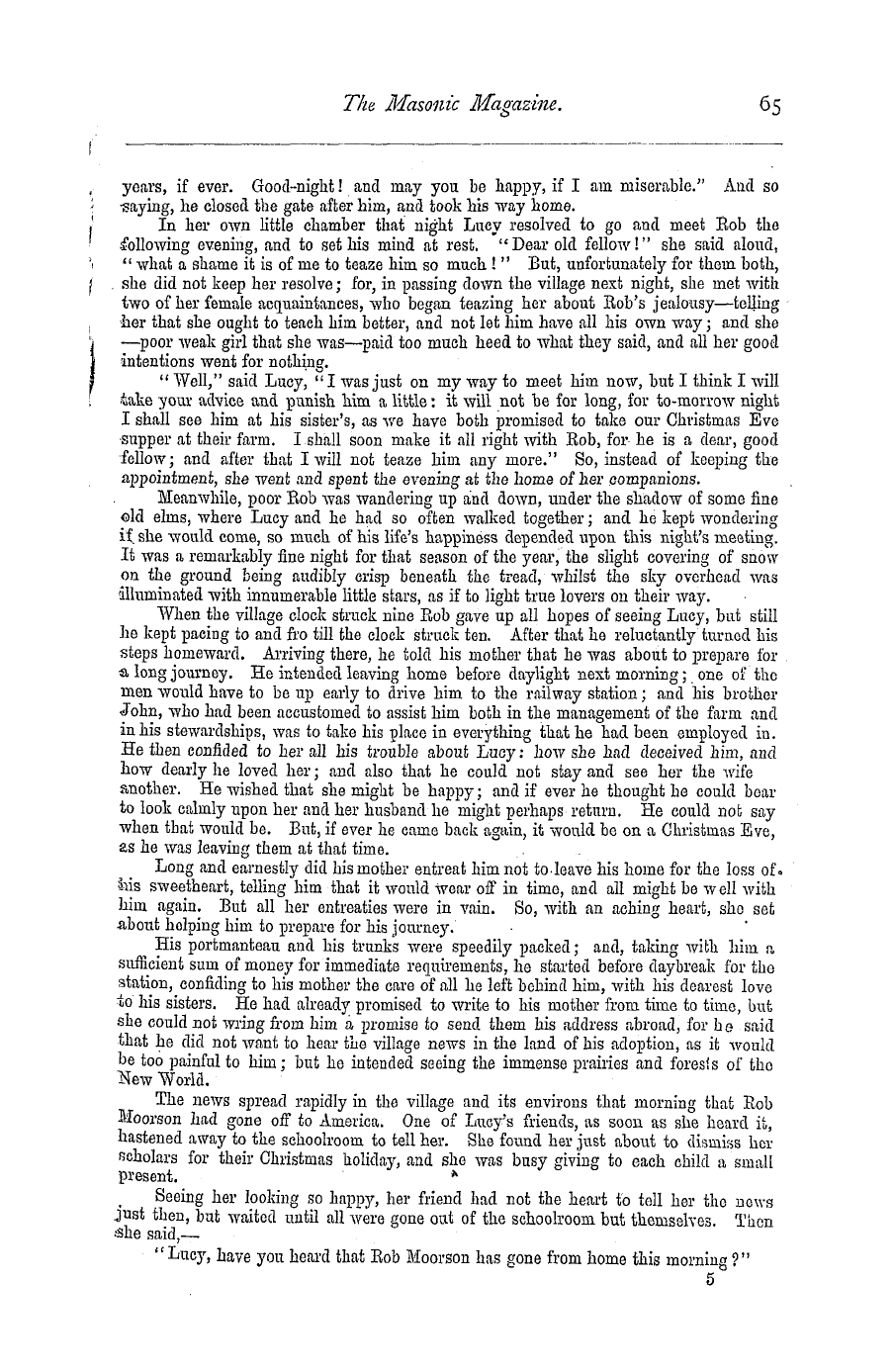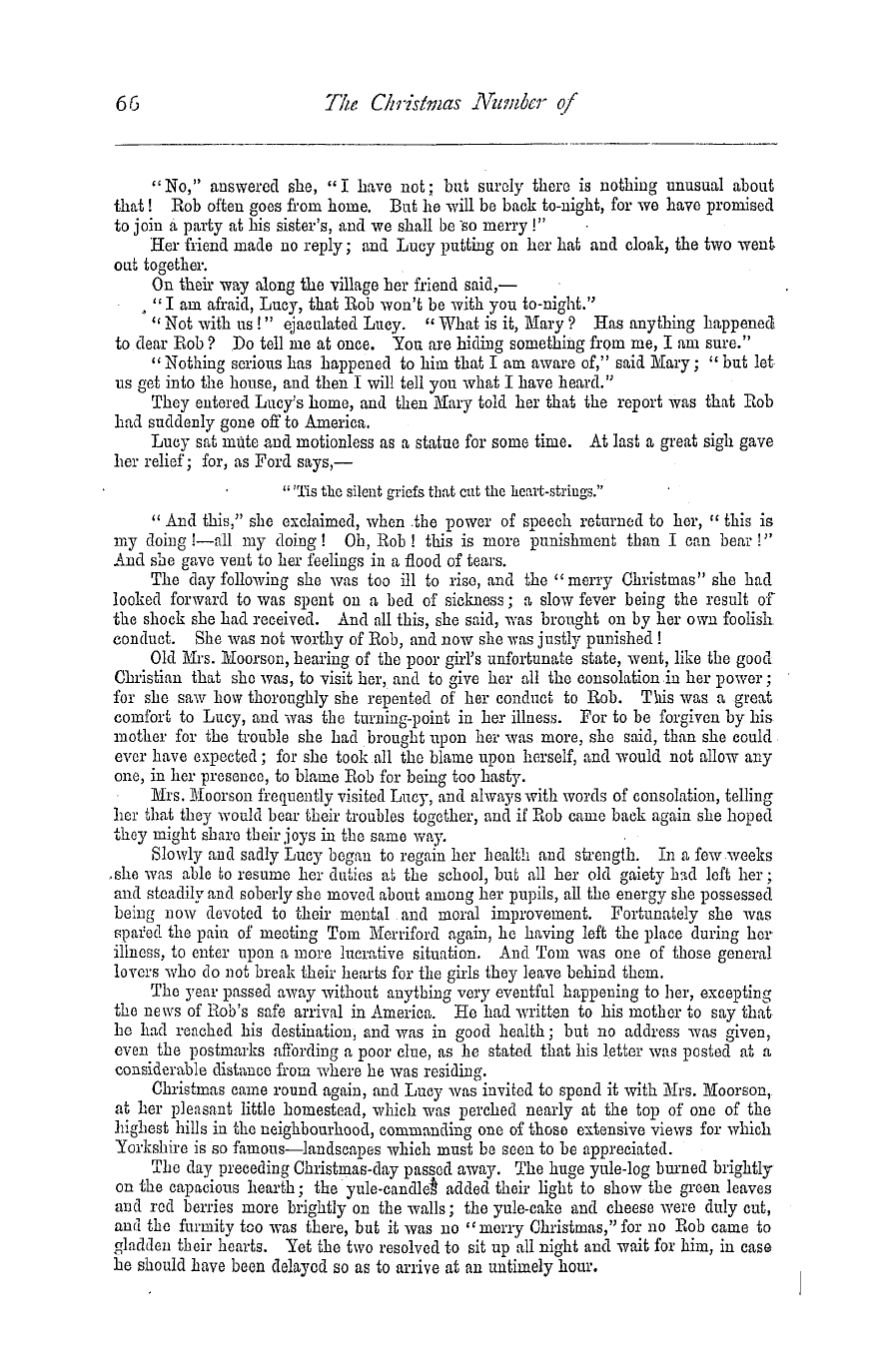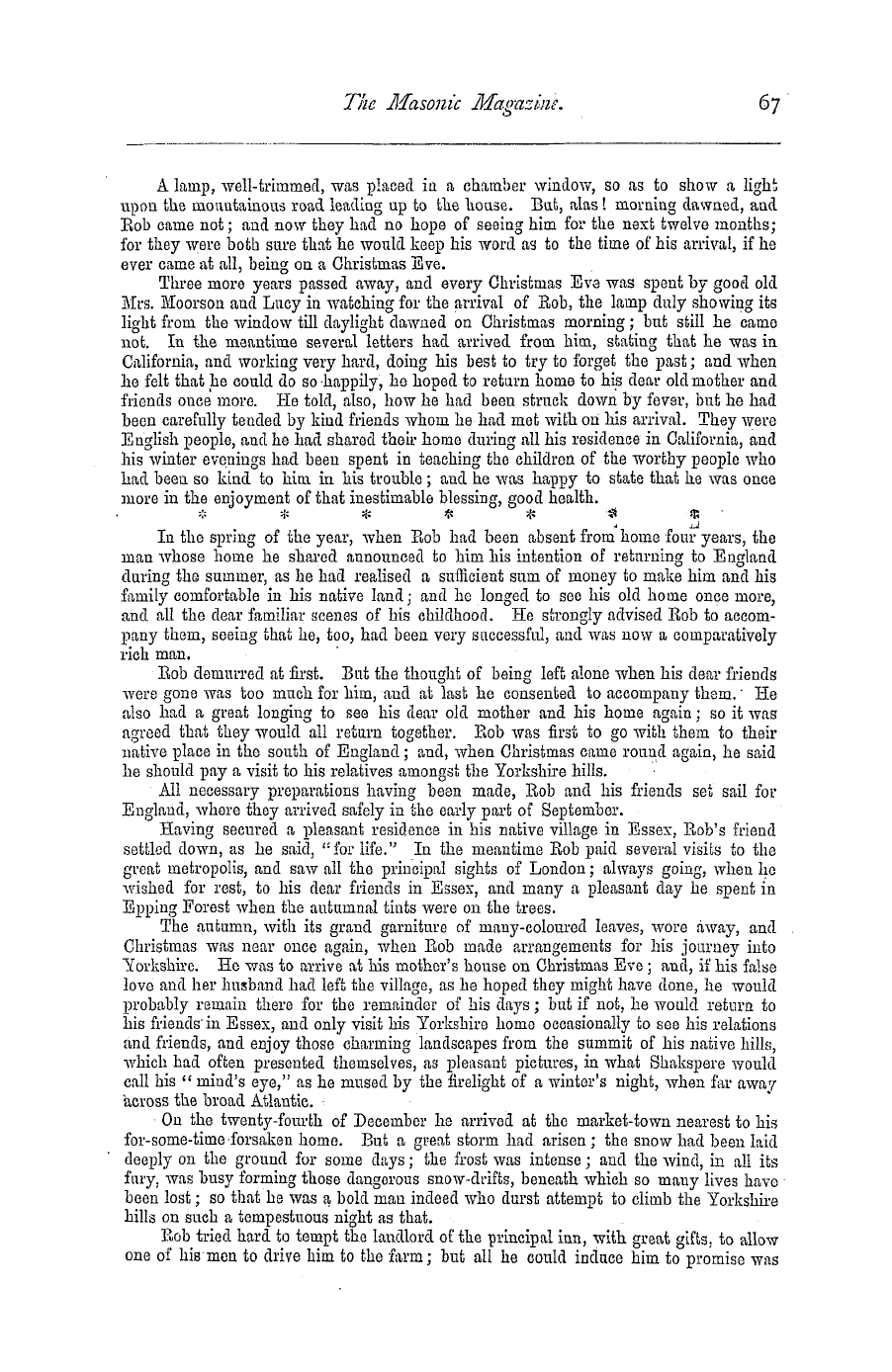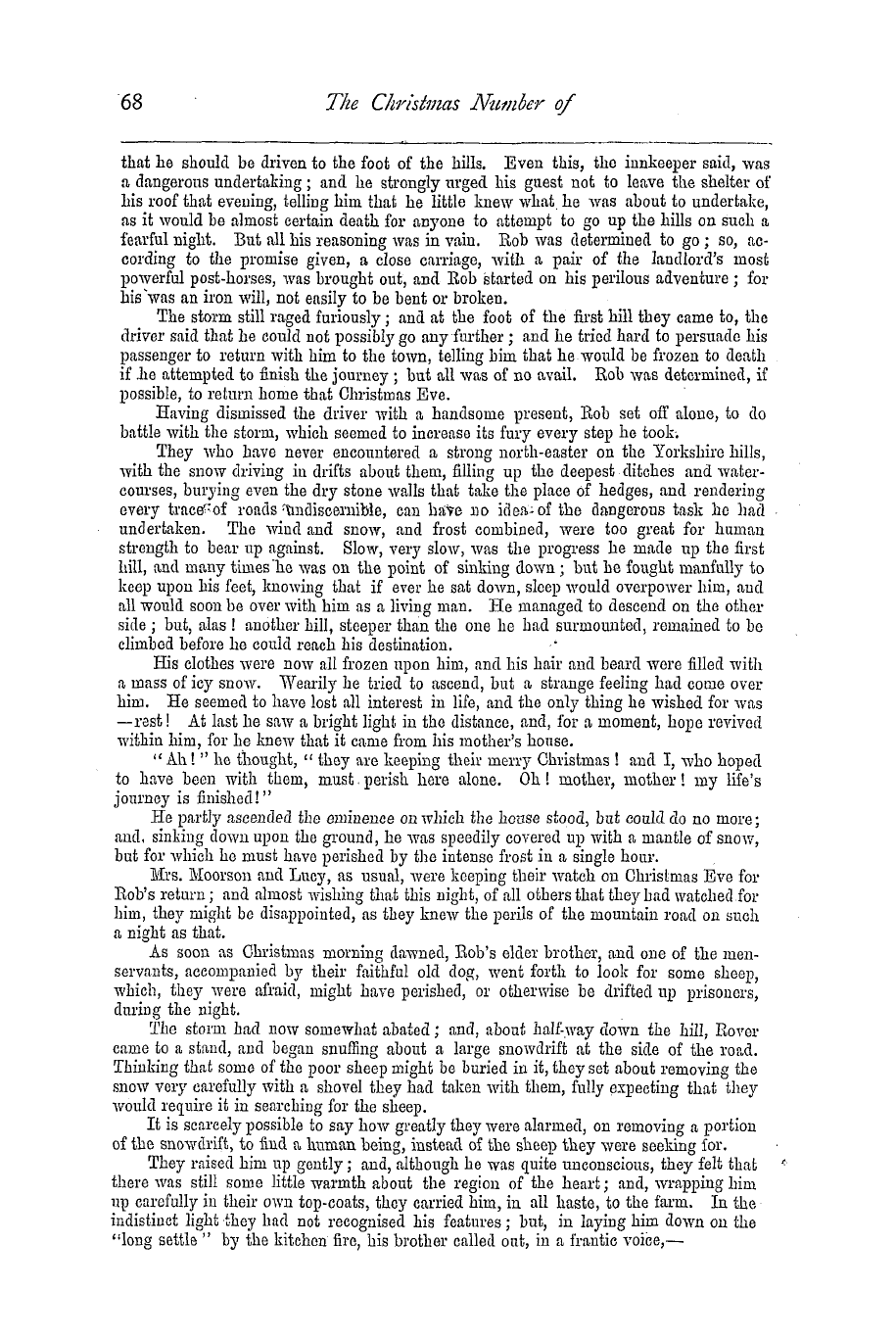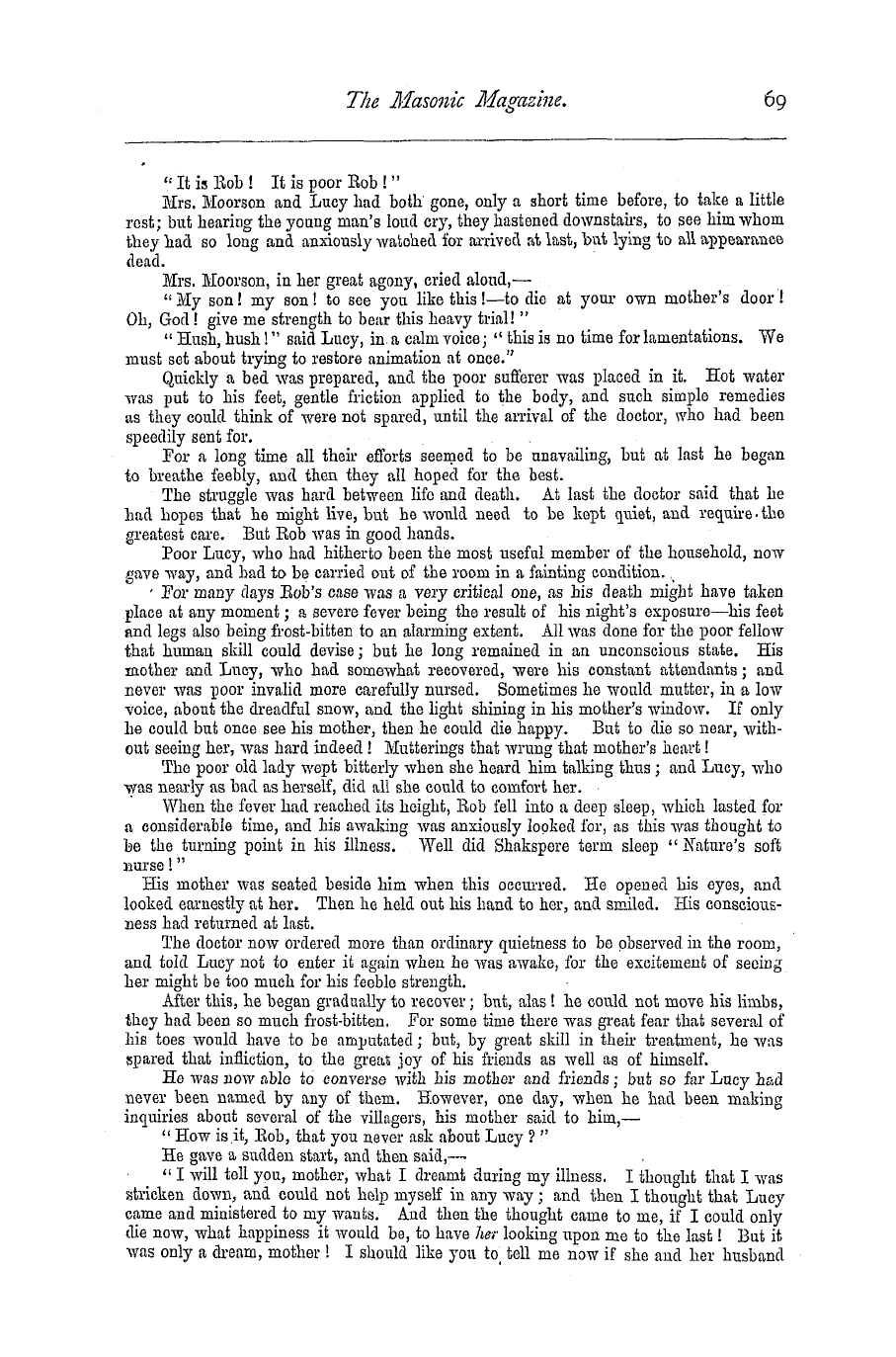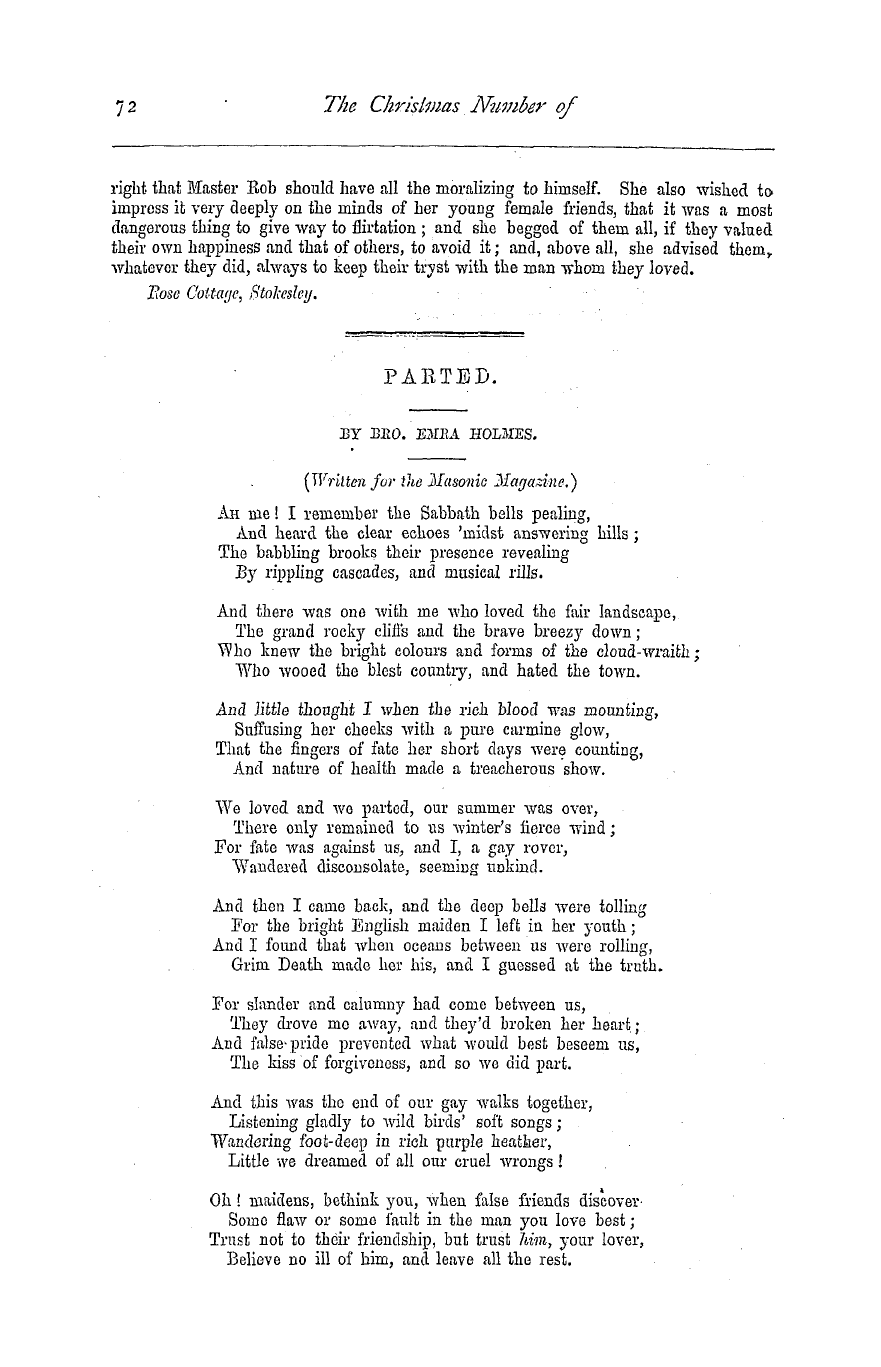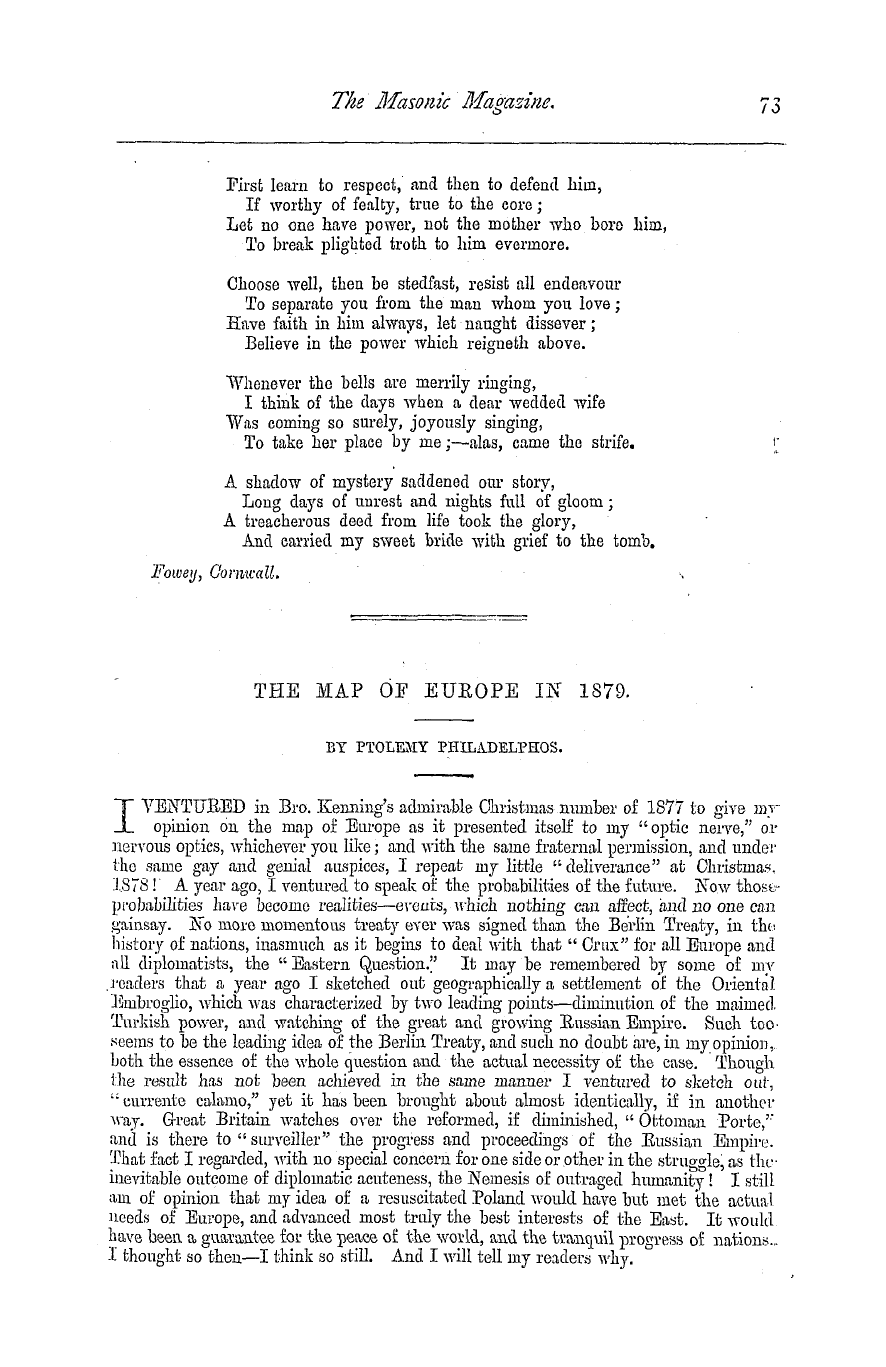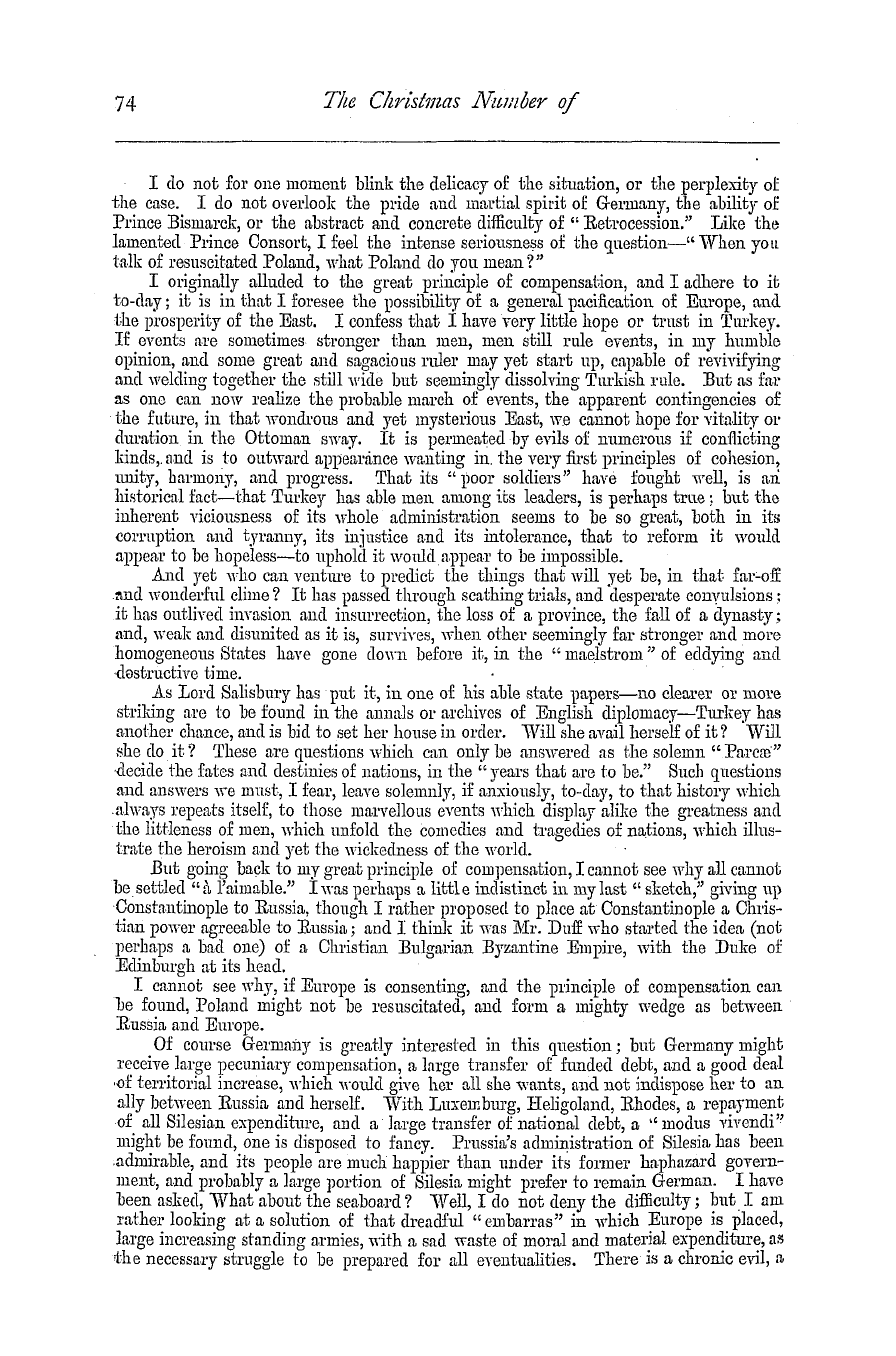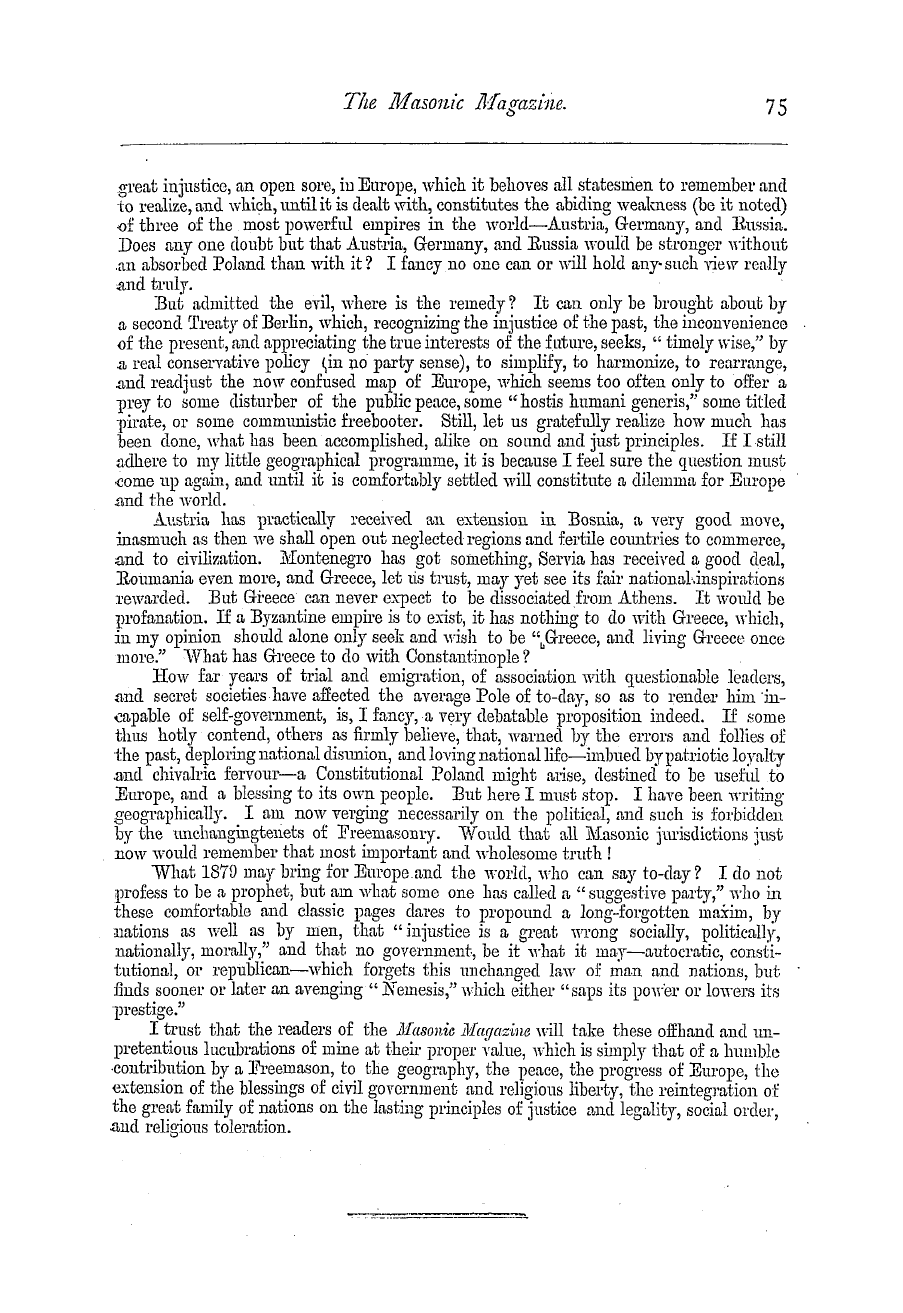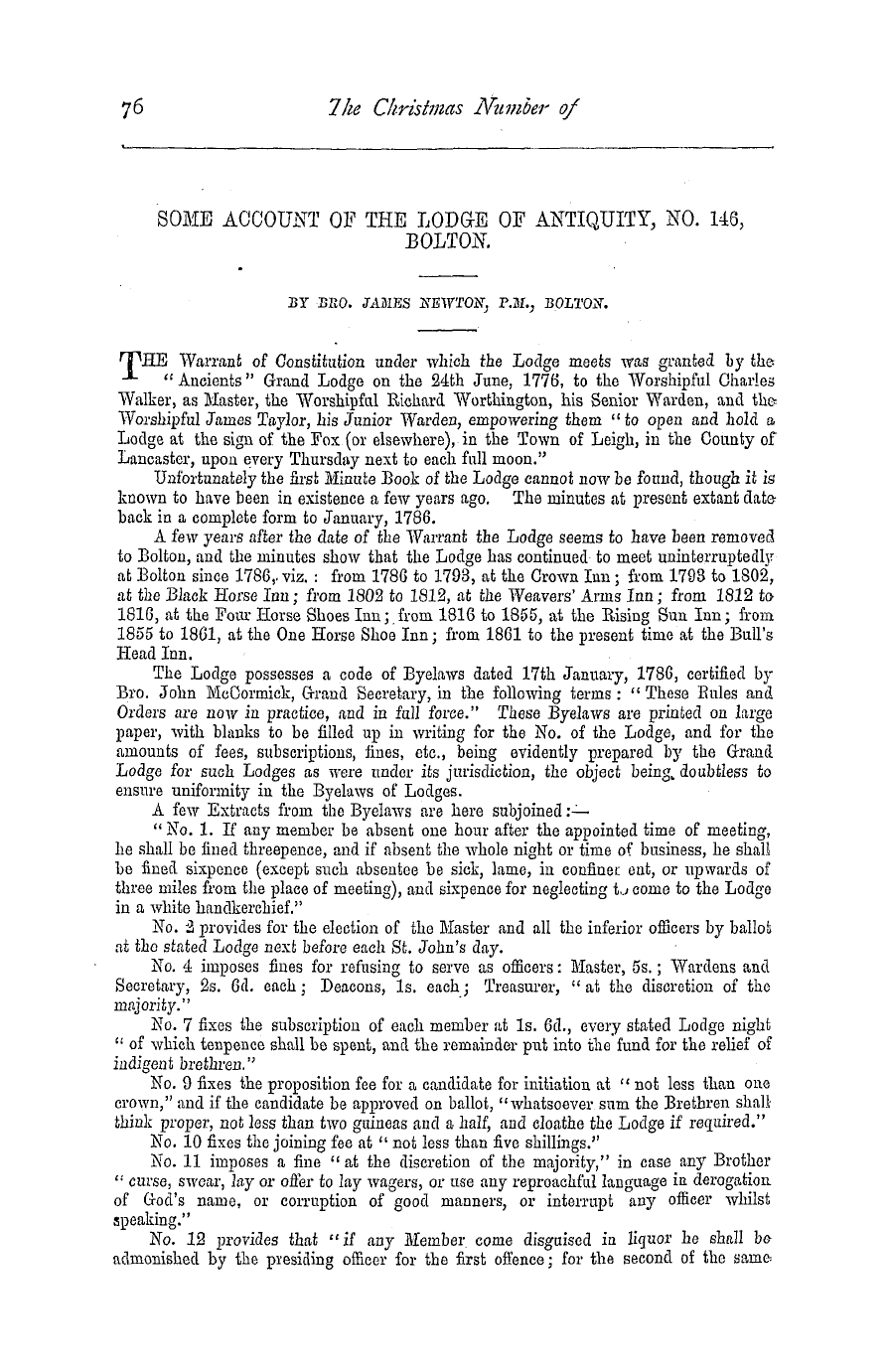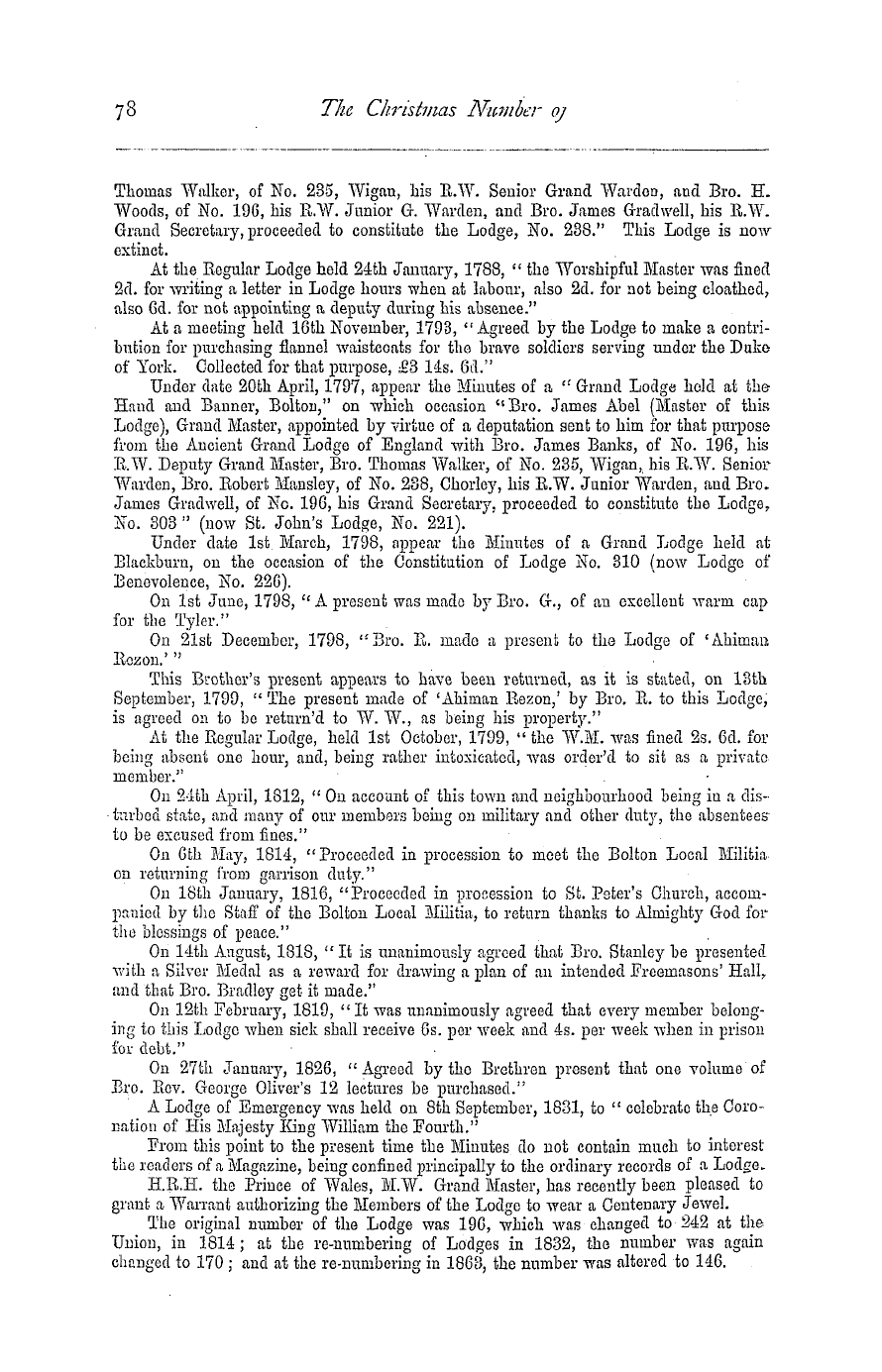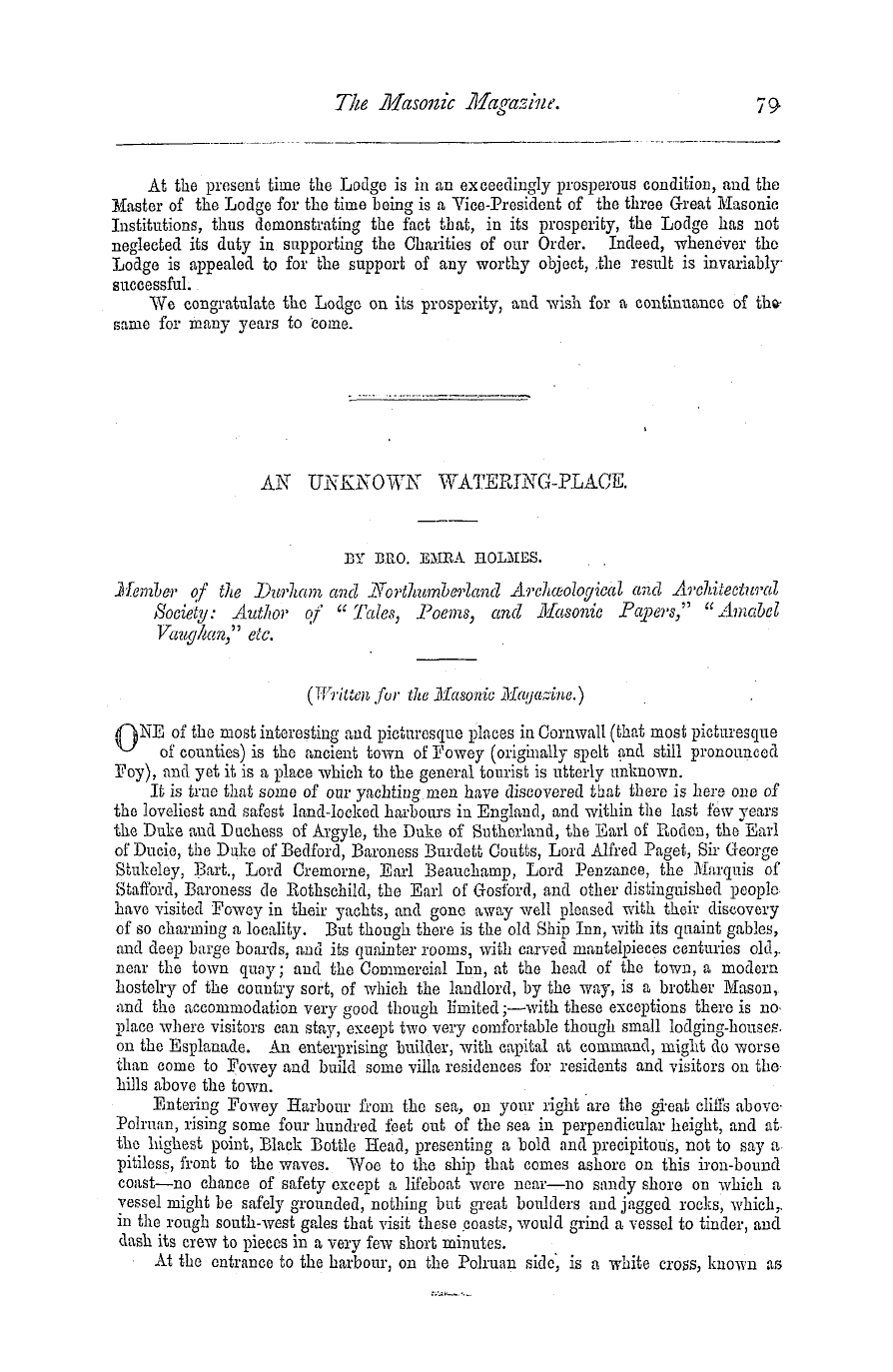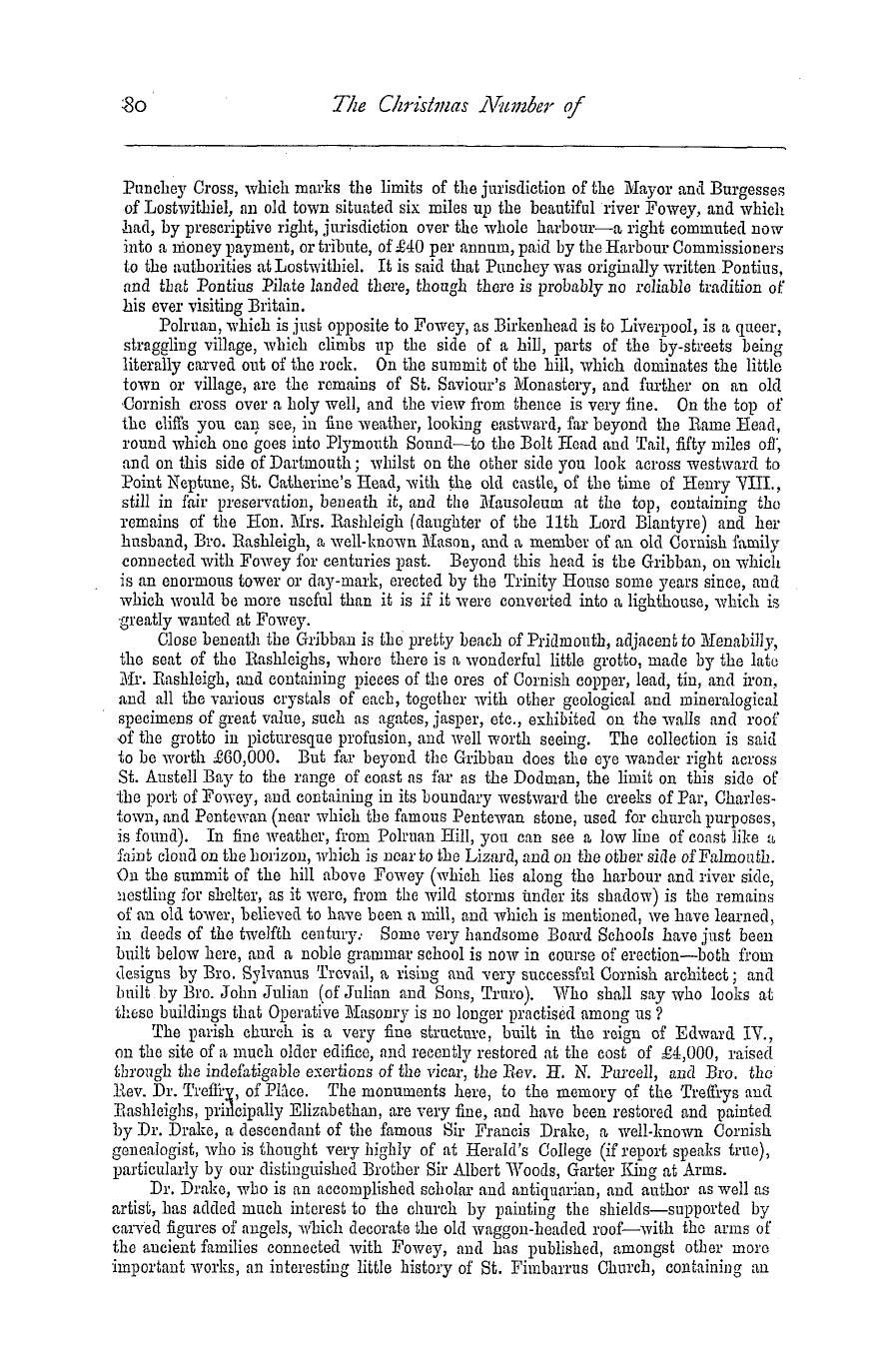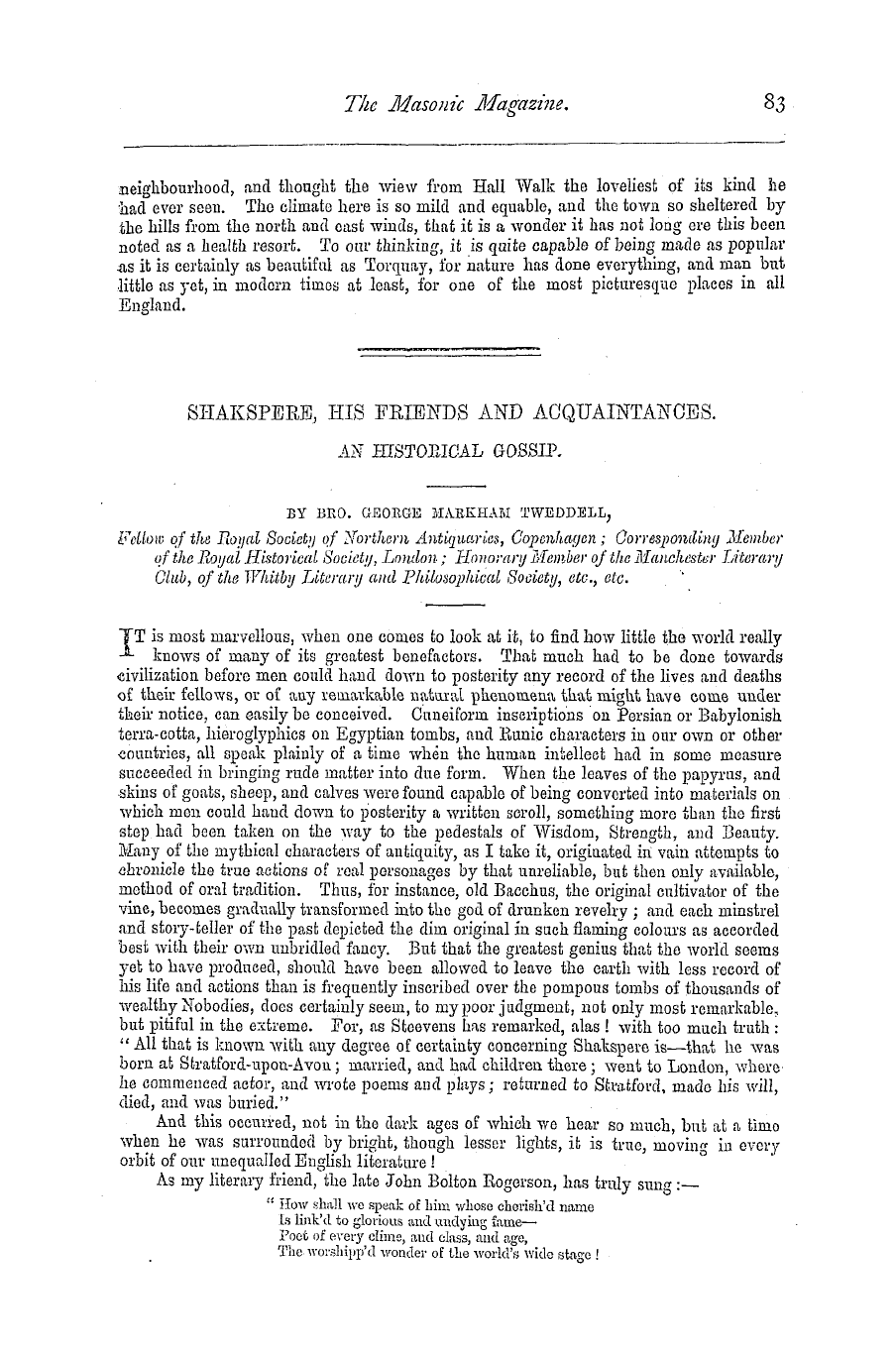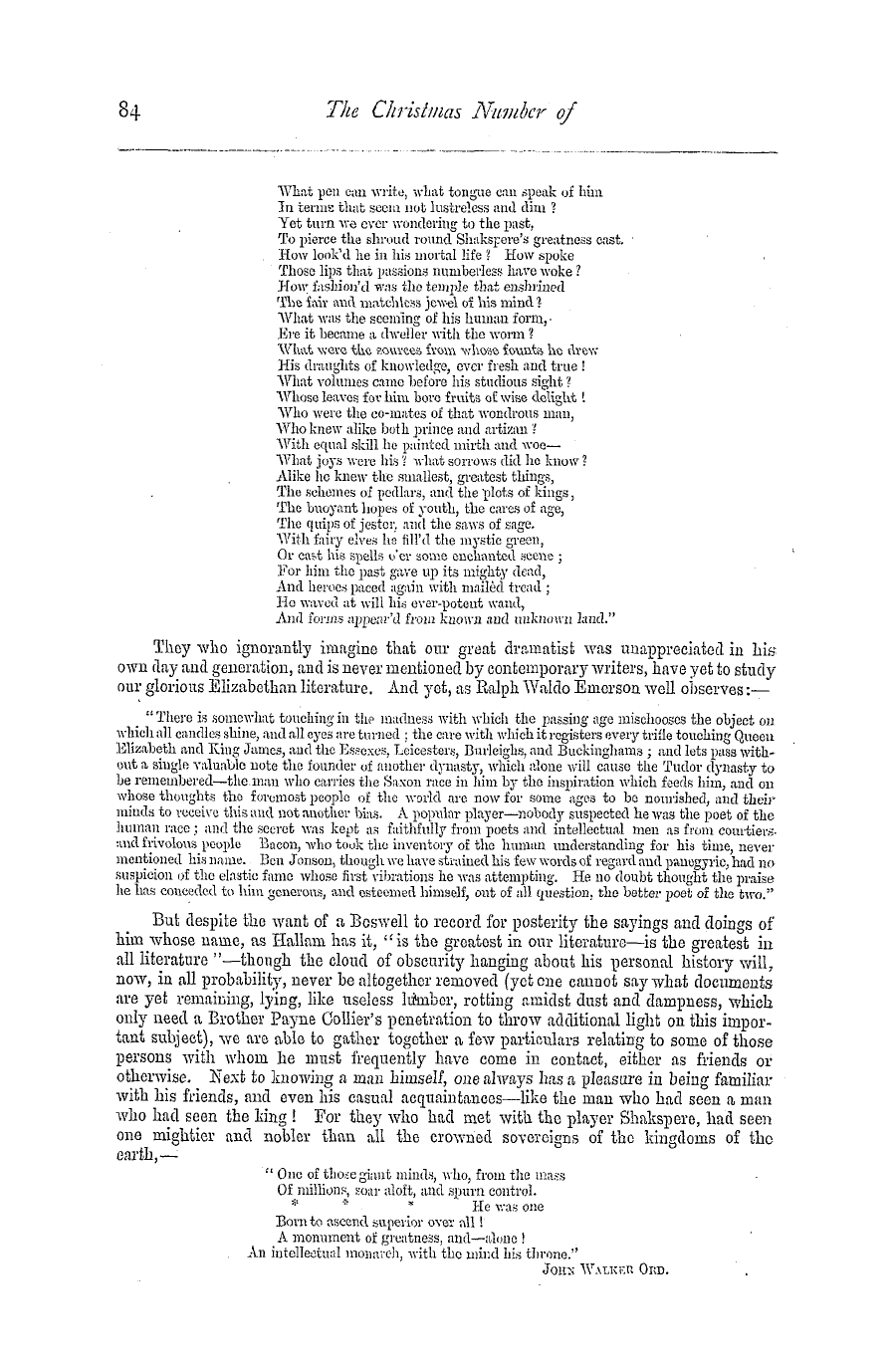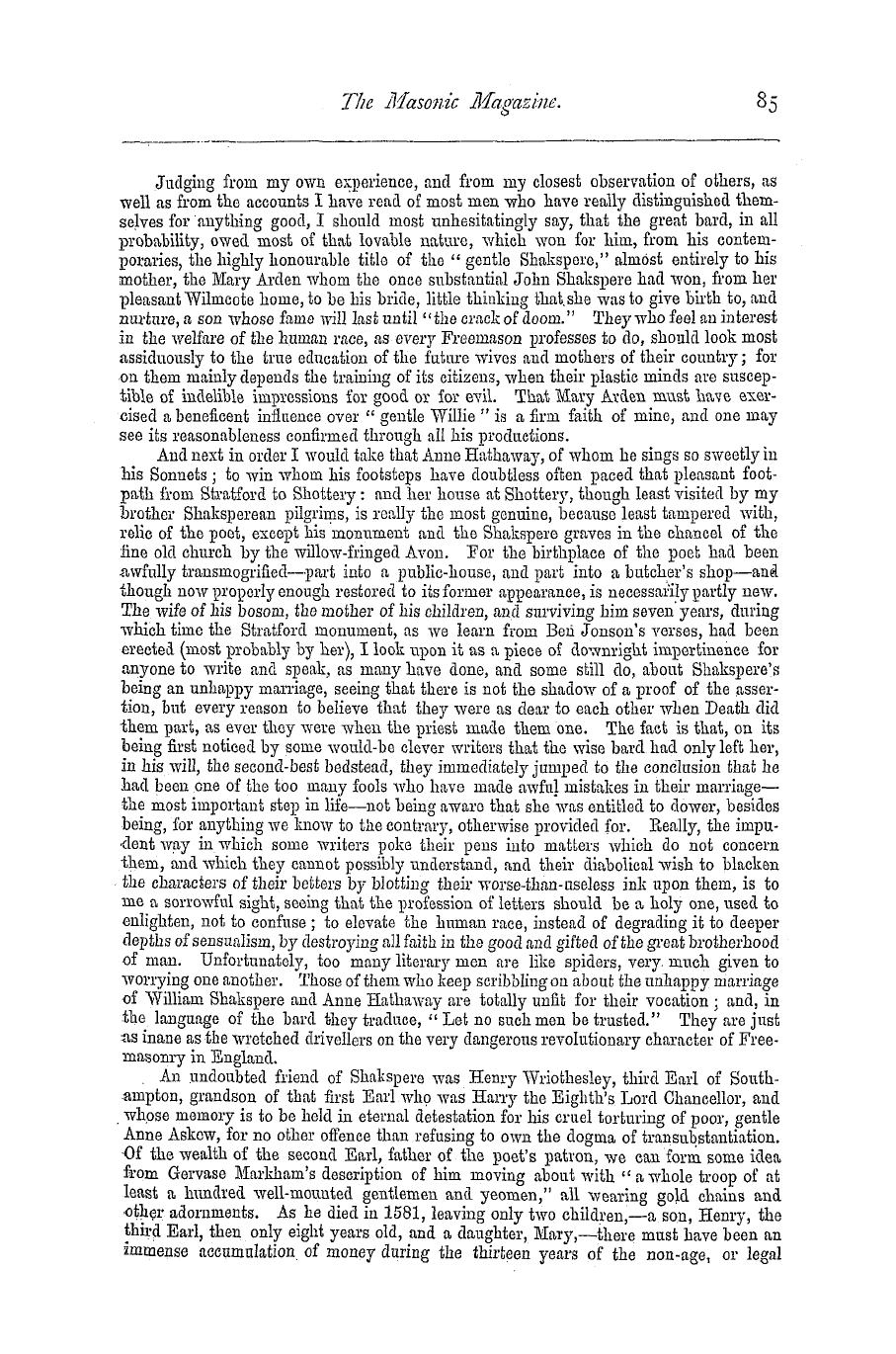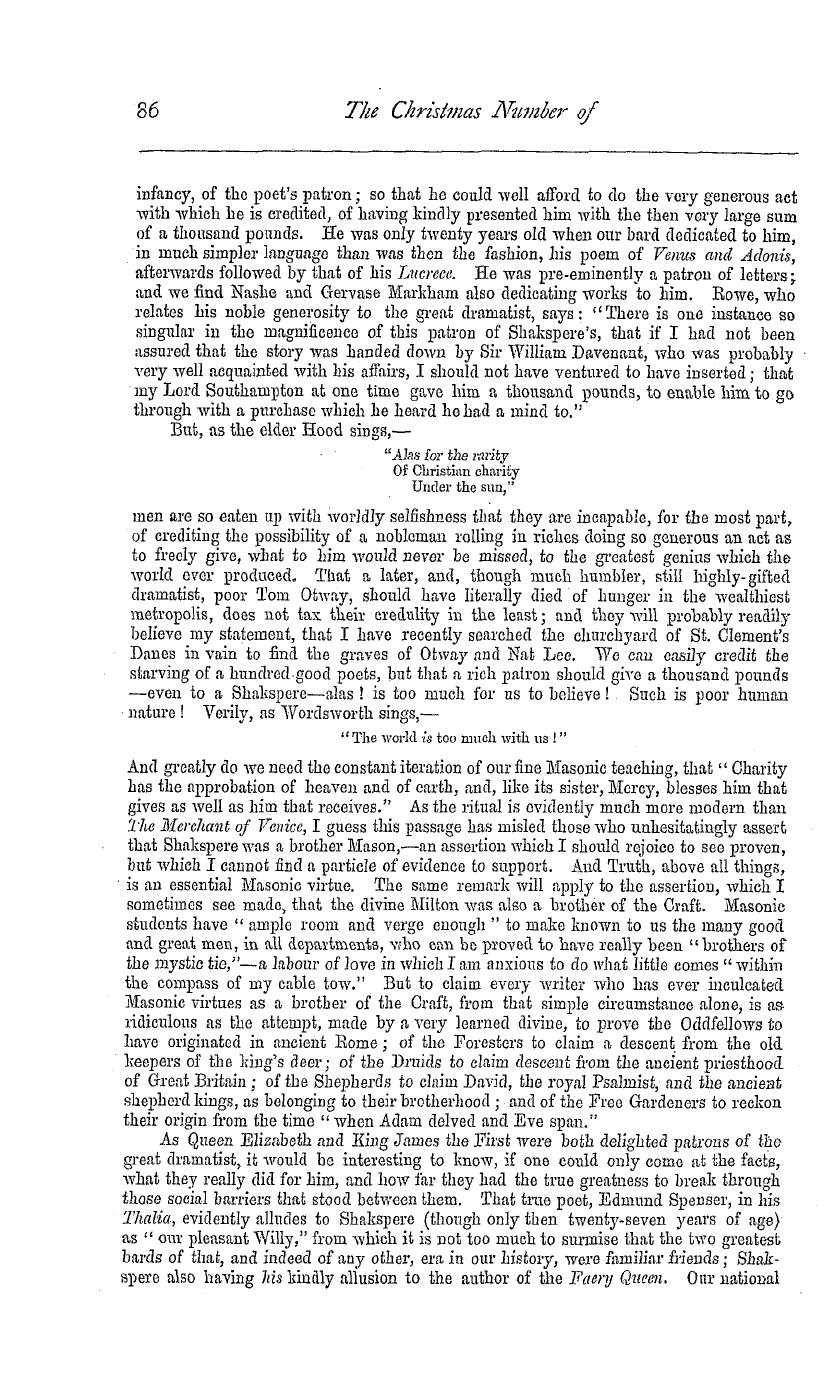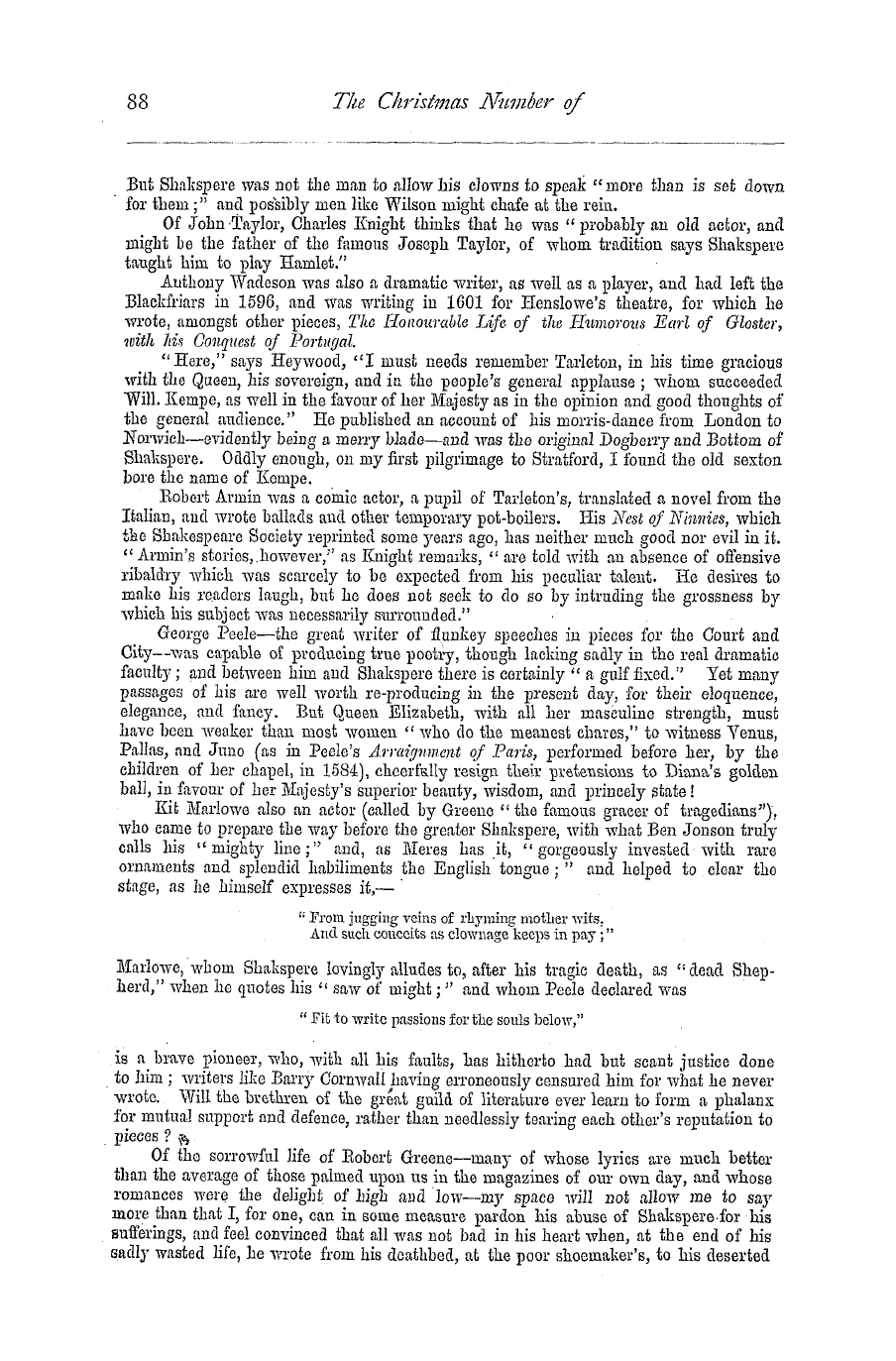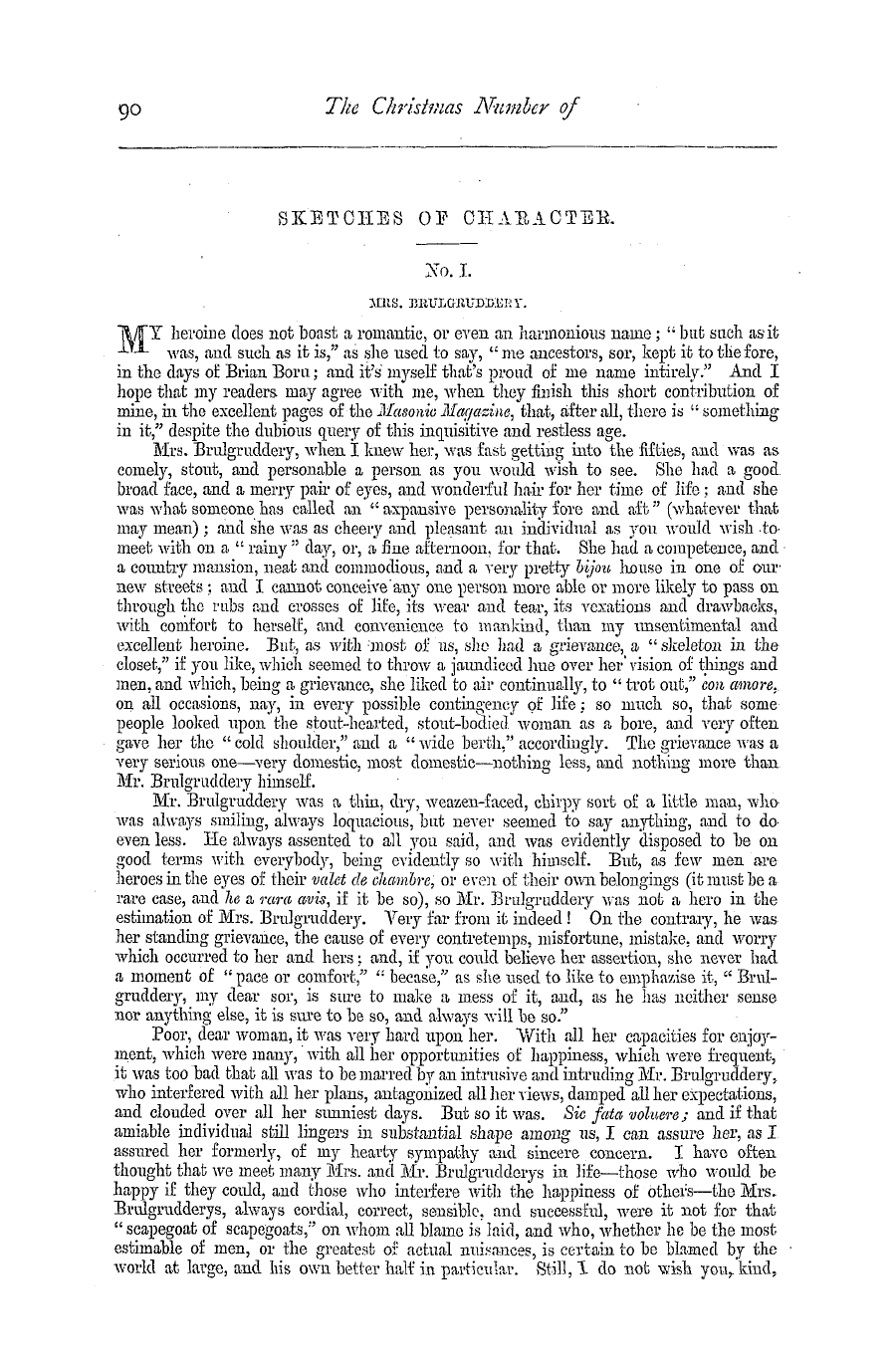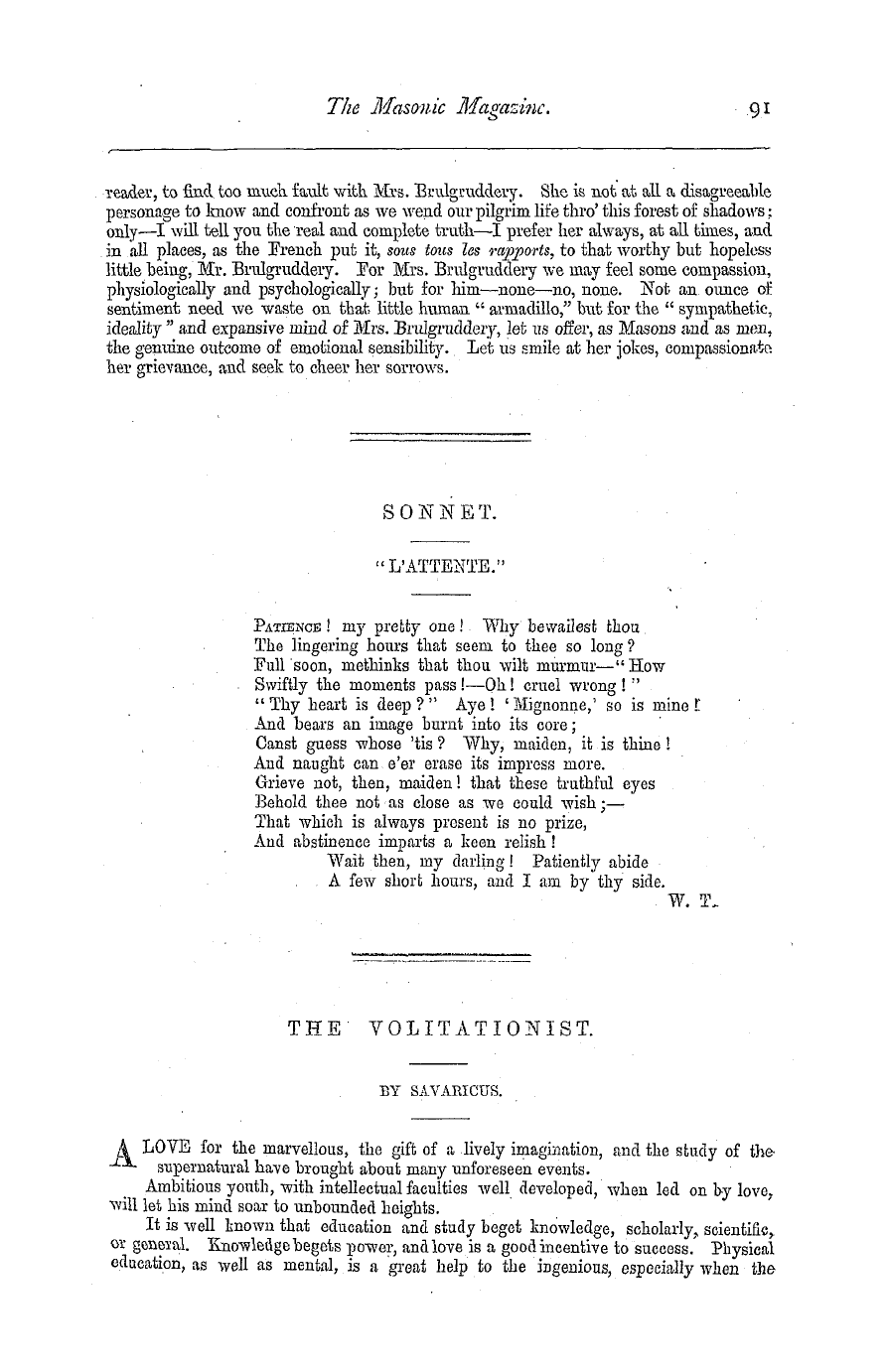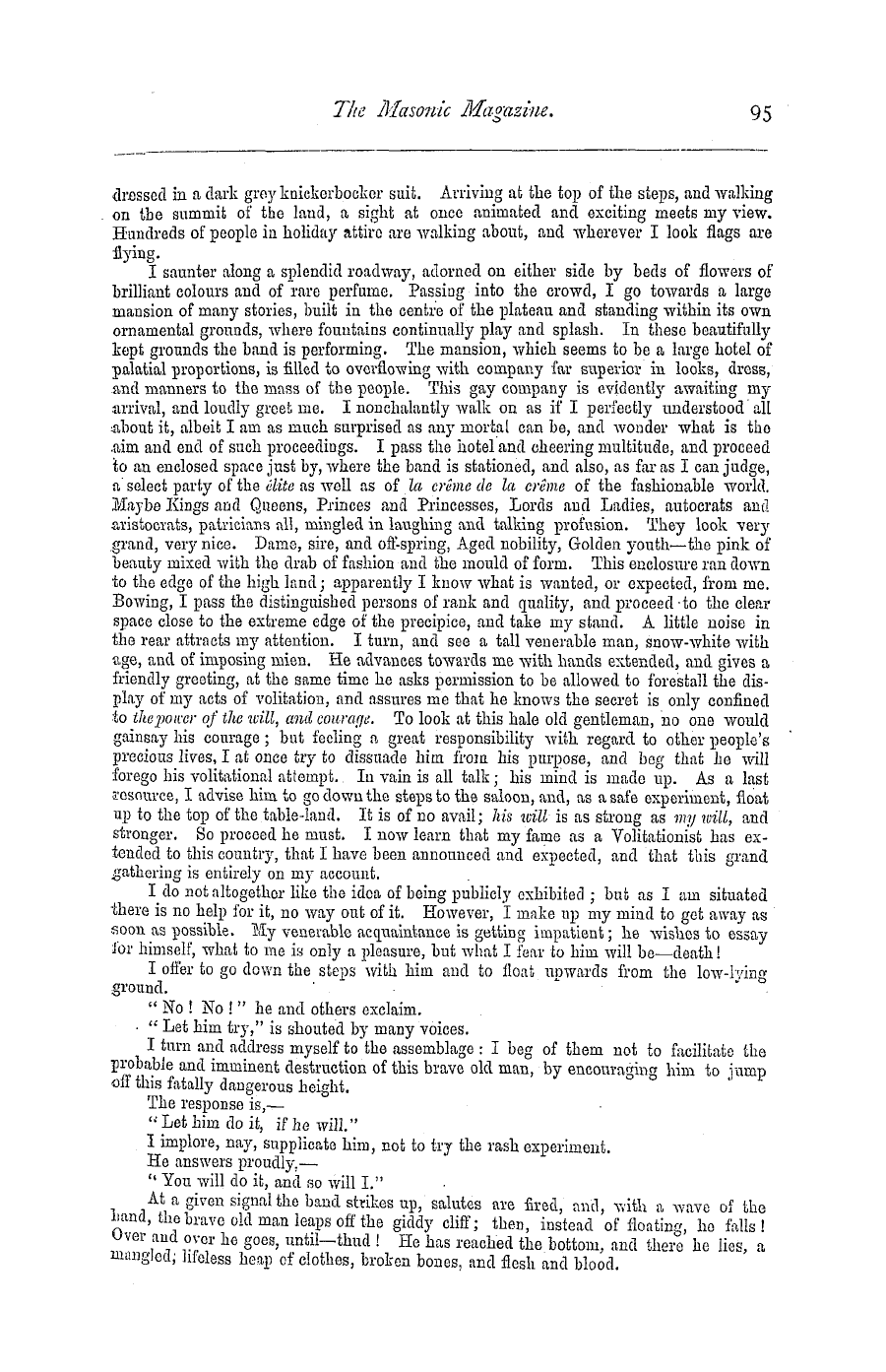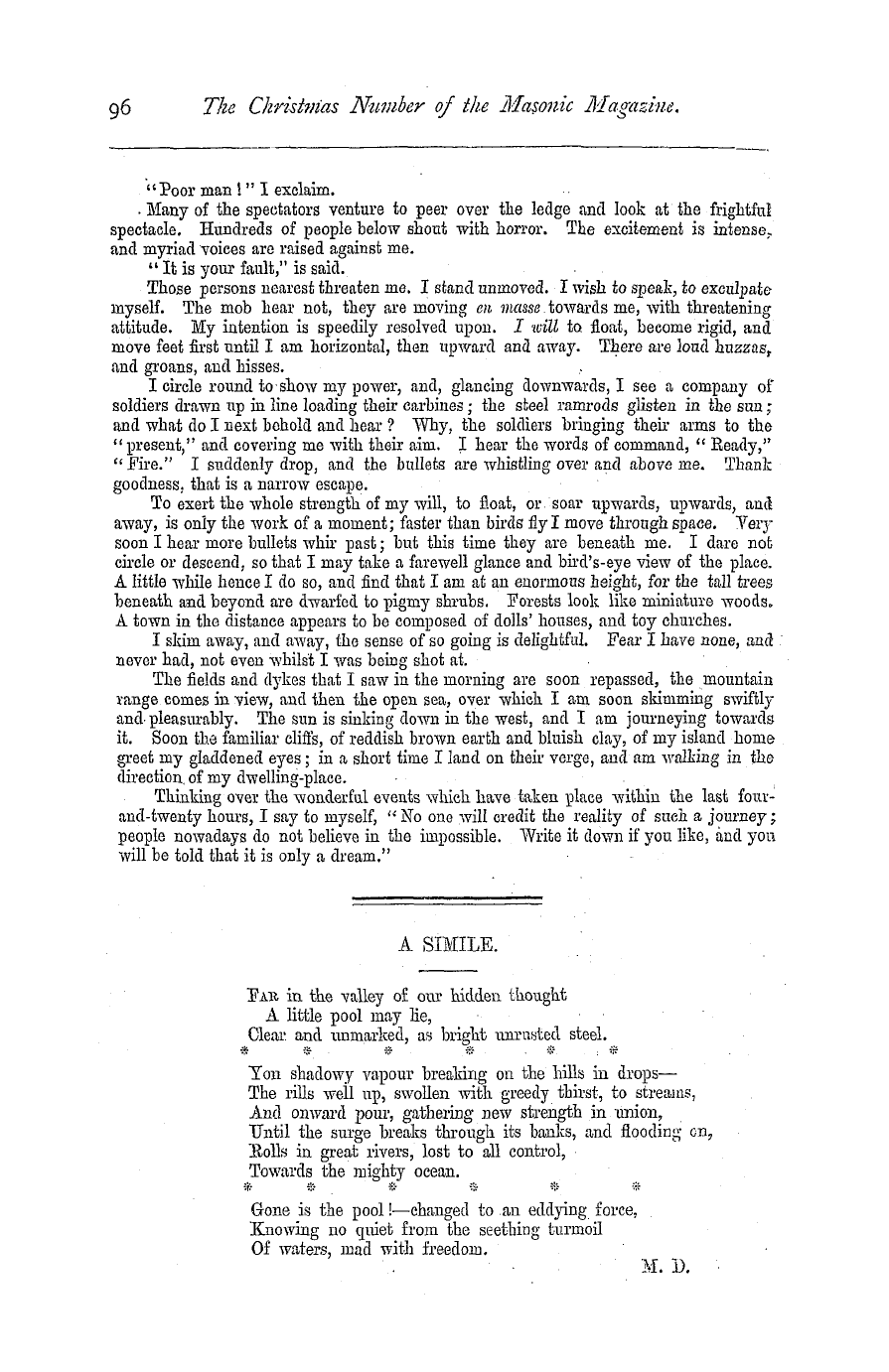-
Articles/Ads
Article GOTHIC ARCHITECTURE.* ← Page 4 of 5 →
Note: This text has been automatically extracted via Optical Character Recognition (OCR) software.
Gothic Architecture.*
But behind the pointed gables of the front there are flat roofs , so that the gables stand quite free above them . A glance at the d \ velling-houses of that town shows that flatroofs are indigenous in Italy ; and we may therefore justly conclude that the whole style of budding which has high gables is foreign there , and comes from a northern country . * And just as the high gables on the flat Italian roofs belong to a northern country , so the flat gable on the high German roof has evidently been transplanted into
Germany from a southern country . The church of Batalha in Portugal , f affords another instance of the use of the pointed arch style in southern countries . The roof of the church is quite flat , covered with large stone slabs , and suitable to the climate : the whole form of the biidihngj the pyramids ) and the small pointed gables with which the aspiring pdlars are ornamented , are , however , discordant with the horizontal termination of the nave of the church , andclearly show that the high gable roof is essential in this style of building , and that consequently its origin can be sought for in a northern climate only . J
It has been seen m the preceding chapter that the pointed arch style of the thirteenth century arose out of the more ancient Christian Eoman style . If this and the foregoing observations be admitted , we shad be obliged to look for its origin in a country which has a northern climate and in which that aneient style of budding prevaded ; consequently in the north of France , in England , or in Germany . The French churches of the Middle Age , some of which are considerable , are but little known by drawings ; the editorthereforecan refer here onlto the cathedral of
, , y Paris . || The main form of the front gate , § which is said to have been built in the reign of King Philip Augustus , has , upon the whole , no high aspiring proportions ; on the contrary , the horizontal line which prevads in the composition , and the flat roofs of the towers , correspond infinitely more with the ancient Christian Eoman style than with the architecture of the Middle Age , from which the detads alone of the ornaments appear to be borrowed .
Among the more ancient English churches none is more celebrated than York Minster , which was biult towards the latter end of the thirteenth , and in the beginning of the fourteenth century . ^] " As the English lay such positive claims to the merit of having invented and improved the pointed arch style of the thirteenth century , a closer examination of this church wfll not be deemed superfluous . Its main forms , the low gable roof , and the flat towers , evidently belong to an originally southern
style of budding . The whole ornamental system , on the contrary , is of northern origin , and stands in evident contradiction to these leading forms . The pointed gable which crowns the middle window , and is repeated in ad the ornaments of the edifice , does not harmonize with the flat gable of the roof . The flat roofs of the towers correspond as little with the other parts of the building ; they should necessarily have terminated in pyramids , as all the smader towers of the aspirins niUars have
the pyramidal form . Afl this shows the incongruous combination of two completely heterogeneous styles of budding , and prejudices us so much the less in behalf of the originality of the English ecclesiastical architecture , as at the time when the York Minister was biult the German churches already displayed the completest development of the art . ' Lastly , let us examine the German style of church budding , and particularly the minsters of Strasburgh ancl Freiburgh , and the church at Oppenheim , which were ad bunt in the second half of the thirteenth , and in the beginning of the
Note: This text has been automatically extracted via Optical Character Recognition (OCR) software.
Gothic Architecture.*
But behind the pointed gables of the front there are flat roofs , so that the gables stand quite free above them . A glance at the d \ velling-houses of that town shows that flatroofs are indigenous in Italy ; and we may therefore justly conclude that the whole style of budding which has high gables is foreign there , and comes from a northern country . * And just as the high gables on the flat Italian roofs belong to a northern country , so the flat gable on the high German roof has evidently been transplanted into
Germany from a southern country . The church of Batalha in Portugal , f affords another instance of the use of the pointed arch style in southern countries . The roof of the church is quite flat , covered with large stone slabs , and suitable to the climate : the whole form of the biidihngj the pyramids ) and the small pointed gables with which the aspiring pdlars are ornamented , are , however , discordant with the horizontal termination of the nave of the church , andclearly show that the high gable roof is essential in this style of building , and that consequently its origin can be sought for in a northern climate only . J
It has been seen m the preceding chapter that the pointed arch style of the thirteenth century arose out of the more ancient Christian Eoman style . If this and the foregoing observations be admitted , we shad be obliged to look for its origin in a country which has a northern climate and in which that aneient style of budding prevaded ; consequently in the north of France , in England , or in Germany . The French churches of the Middle Age , some of which are considerable , are but little known by drawings ; the editorthereforecan refer here onlto the cathedral of
, , y Paris . || The main form of the front gate , § which is said to have been built in the reign of King Philip Augustus , has , upon the whole , no high aspiring proportions ; on the contrary , the horizontal line which prevads in the composition , and the flat roofs of the towers , correspond infinitely more with the ancient Christian Eoman style than with the architecture of the Middle Age , from which the detads alone of the ornaments appear to be borrowed .
Among the more ancient English churches none is more celebrated than York Minster , which was biult towards the latter end of the thirteenth , and in the beginning of the fourteenth century . ^] " As the English lay such positive claims to the merit of having invented and improved the pointed arch style of the thirteenth century , a closer examination of this church wfll not be deemed superfluous . Its main forms , the low gable roof , and the flat towers , evidently belong to an originally southern
style of budding . The whole ornamental system , on the contrary , is of northern origin , and stands in evident contradiction to these leading forms . The pointed gable which crowns the middle window , and is repeated in ad the ornaments of the edifice , does not harmonize with the flat gable of the roof . The flat roofs of the towers correspond as little with the other parts of the building ; they should necessarily have terminated in pyramids , as all the smader towers of the aspirins niUars have
the pyramidal form . Afl this shows the incongruous combination of two completely heterogeneous styles of budding , and prejudices us so much the less in behalf of the originality of the English ecclesiastical architecture , as at the time when the York Minister was biult the German churches already displayed the completest development of the art . ' Lastly , let us examine the German style of church budding , and particularly the minsters of Strasburgh ancl Freiburgh , and the church at Oppenheim , which were ad bunt in the second half of the thirteenth , and in the beginning of the

































































